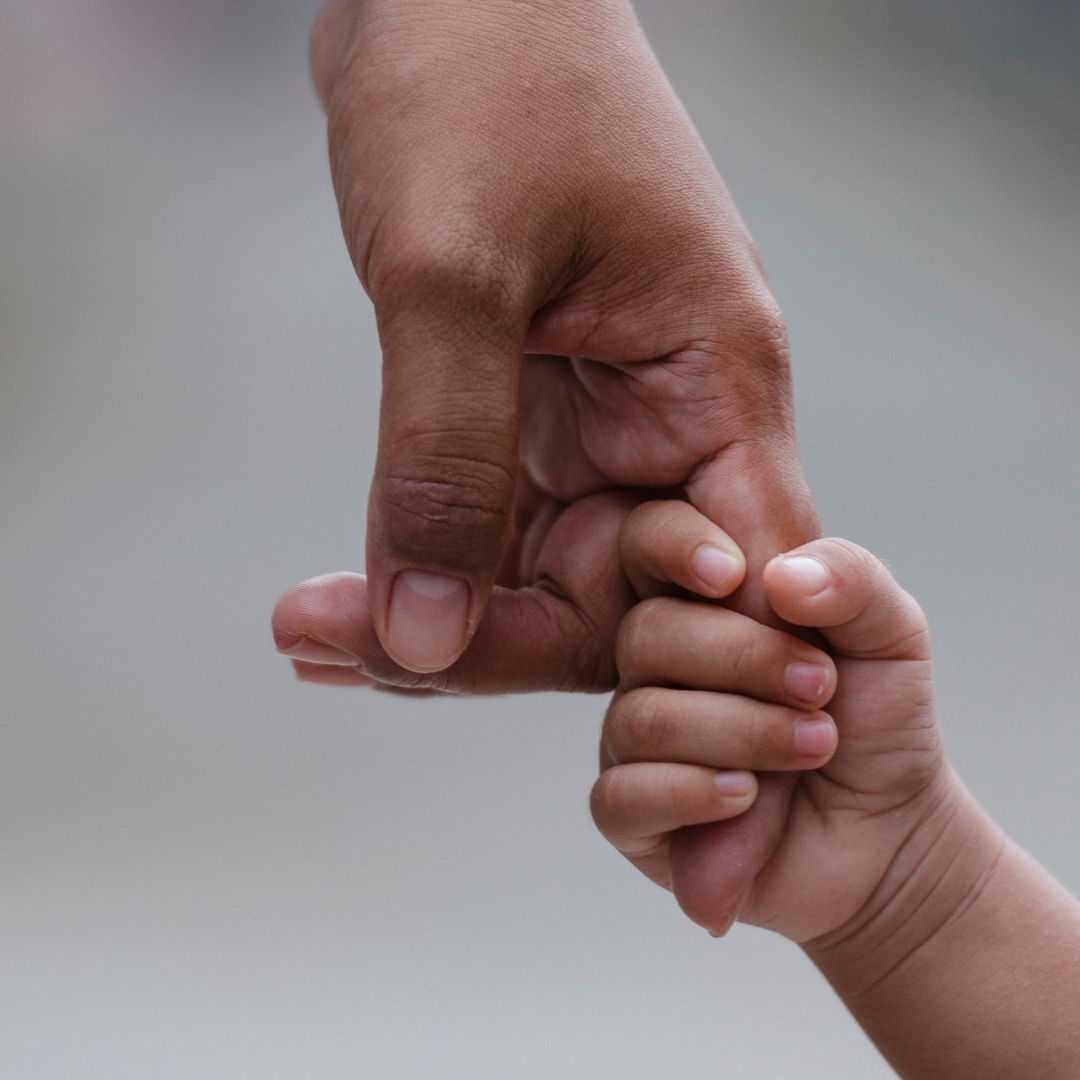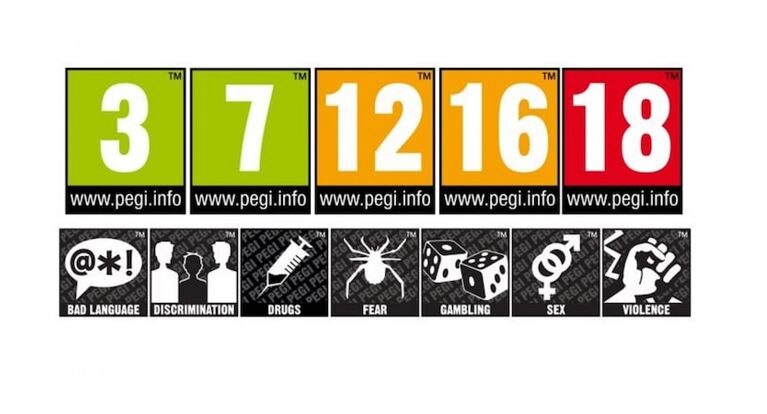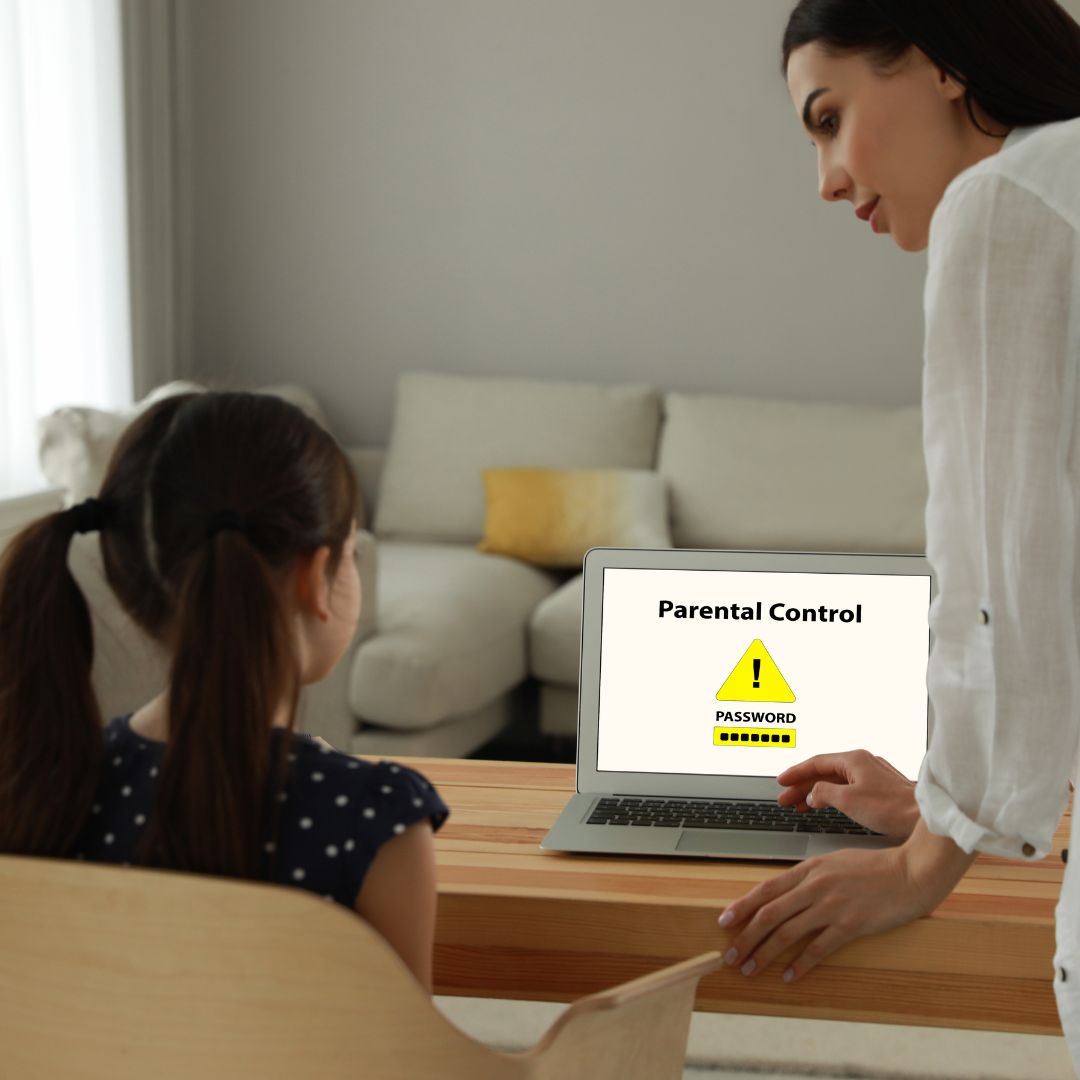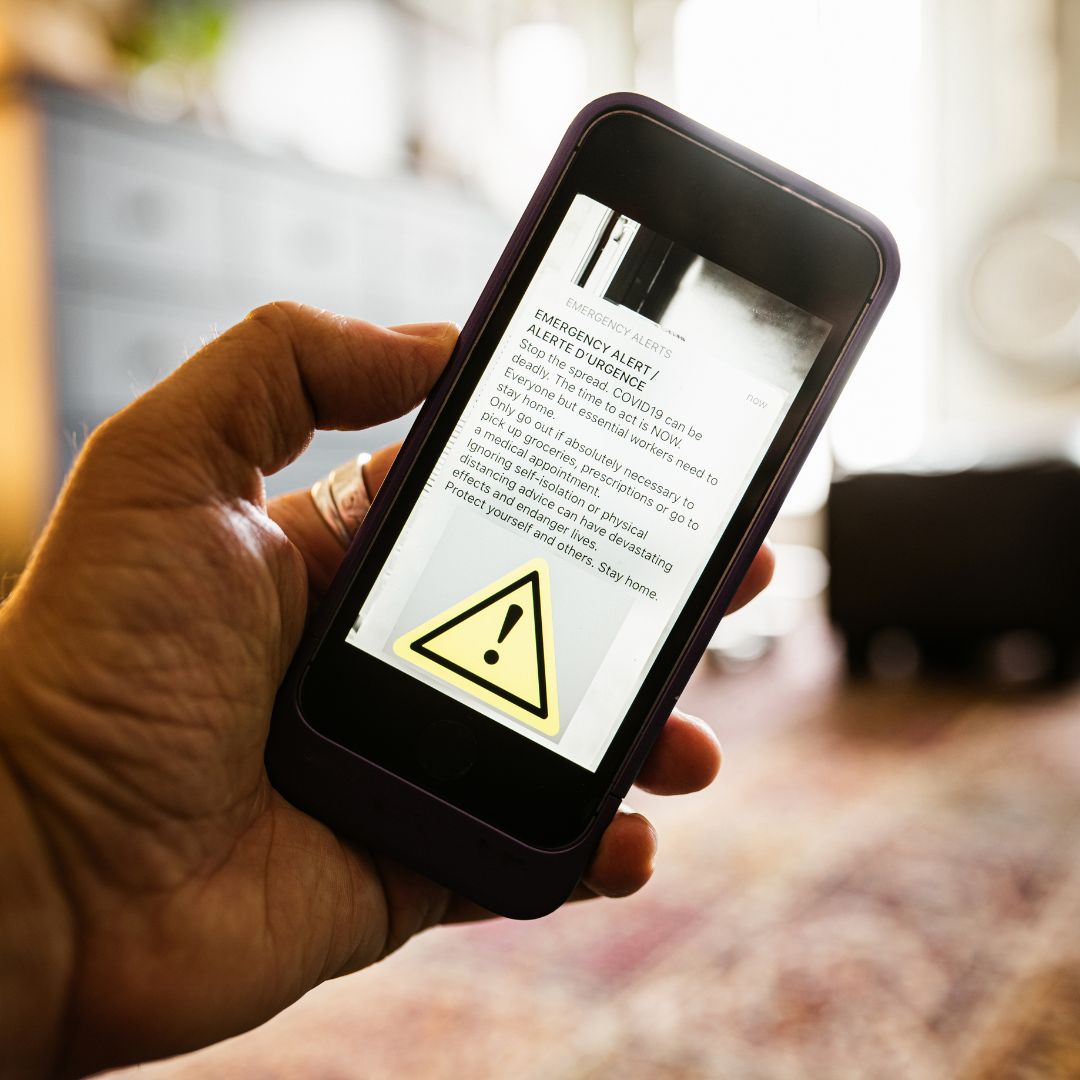Online Safety blogs
December 2022-Present
Percy Hedley School produces a weekly Online Safety blog, find them below.

Keeping Our Children Safe Online: A Guide for Parents on Sextortion
As parents, it is crucial to be aware of the dangers our children may face online. One such threat is sextortion, a type of online blackmail where individuals threaten to share intimate images or videos unless the victim complies with their demands.
Here are some important tips to help protect your children from falling victim to sextortion:
- Communicate openly with your child about online safety. Encourage them to come to you if they ever feel uncomfortable or threatened online.
- Teach your child about the importance of privacy settings and being cautious about sharing personal information with strangers online.
- Remind your child that once something is shared online, it can be difficult to completely remove it. Encourage them to think before sharing anything online.
- Create a safe online environment for your child by monitoring their online activity and setting boundaries on their internet use.
- If your child is ever targeted by a sextortion scam, advise them not to respond to the blackmailer and to report the incident to the police.
By staying informed and having open conversations with our children about online safety, we can help protect them from the dangers of sextortion and other online threats. Together, we can create a safer online environment for our children to thrive in.
Warning: The article below may cause distress
Useful Documents

Useful Resources to Talk to your child
NSPCC partnership with LEGO® Build & Talk
A core part of the NSPCC’s 10-year strategy is to ensure children are safe online. To help achieve this they have teamed up with the LEGO Group to help promote their fun, free Build & Talk activities. The six ‘adventures’ help parents and caregivers talk with their children about key online safety topics through the joy of LEGO play.
Barnardos
Struggling to talk about online safety with your child? Together with Dr Elly Hanson, clinical psychologist and expert on online harms, we have put together some tips to help parents and carers start the conversation about online safety.
Action For Children
Resources for advice on: Games, apps, social media and staying safe online

Self Harm WhatsApp group
This notice has been sent to all schools in North Tyneside from: The Prevention Through Education Team at Northumbria Police
‘Our vision is to deliver an outstanding police service; working with communities to prevent crime and disorder and protect the most vulnerable people from harm.’
WhatsApp group encouraging self-harm in young people
CNTW NHS Trust has made us aware of a WhatsApp group called “everyone you know x” which is circulating in North Tyneside. It is aimed at Y6 students.
There are currently 500 members, and the group encourages members to self-harm.
Three young people (two from Gateshead and one from Northumberland) are in hospital following overdose and they have disclosed that there is a social media trend whereby young people are being encouraged to take overdoses on a points scoring system eg, if admitted to hospital, if a liver specialist has been contacted etc.
As these young people are not from the North Tyneside area, and there is potential for this to affect other year groups, we are making all schools in our force area aware.
Please consider making your students’ parent/carers aware of this group/trend and follow your school’s safeguarding protocols should you be concerned about individual students.
The NSPCC website has information about helping children who may have been affected by such content pleas click on link for further information:

Understanding Cyberflashing and How to Keep Your Child Safe Online
You will have read in the news this week about this phenomenon. It is a concerning trend that reports a great amount of people have fallen victim to this. The first person has been convicted of this offence this week.
Please see news report below:
So, what exactly is cyberflashing? Cyberflashing occurs when someone sends unsolicited explicit images or messages to another person through digital means, such as social media, messaging apps, or airdrop on phones. This can be a distressing experience for anyone, especially children who may not know how to handle such situations.
As a parent there are steps you can take to help prevent cyberflashing and protect your child online:
Open Communication: Talk to your child about the importance of staying safe online and let them know they can always come to you if they experience anything uncomfortable.
Privacy Settings: Make sure your child’s devices and social media accounts have strict privacy settings to control who can contact them or send them messages.
Education: Teach your child about the risks of online interactions and the importance of not accepting messages or files from strangers.
Reporting: Encourage your child to report any instances of cyberflashing to you or to the appropriate authorities. Many social media platforms also have reporting features for such incidents.
Support: If your child has experienced cyberflashing, provide them with emotional support and reassure them that it is not their fault. Seek help from professionals if needed.
By being proactive and vigilant, you can help protect your child from the dangers of cyberflashing and create a safer online environment for them. Remember, staying informed and involved in your child’s online activities is key to their safety and well-being.
We hope this information helps you better understand cyberflashing and how to address it with your child. If you have any concerns or questions, feel free to reach out to us. Stay safe online!

Online Safety Guide to WhatsApp for Parents: Keeping Your Children Safe in the Digital World
As a parent, keeping your child safe online is a top priority. In today's digital age, messaging apps like WhatsApp have become increasingly popular among children and teenagers. Over the school year we have had several incidents on WhatsApp with our students. It is important to ensure that your child is using WhatsApp safely and responsibly. Here are some tips to help you navigate the world of WhatsApp and protect your child online:
Set up privacy settings: Encourage your child to set their WhatsApp privacy settings to ensure that only approved contacts can message them. Check the app’s settings together and make sure that the account is secure.
Talk about sharing personal information: Remind your child to never share personal information such as their full name, address, school name, or contact details with strangers on WhatsApp. Emphasise the importance of online privacy.
Monitor group chats: Group chats on WhatsApp can sometimes include unknown or inappropriate individuals. Encourage your child to inform you about any group chats they are a part of and monitor their interactions periodically.
Teach responsible sharing: Discuss the importance of not sharing inappropriate photos, videos, or messages on WhatsApp. Remind your child that once something is shared online, it can be challenging to delete or take back.
Be aware of online risks: Educate your child about the potential risks of online interactions, such as cyberbullying, scams, or predatory behavior. Encourage them to come to you immediately if they experience anything concerning on the app.
Foster open communication: Create a safe space for your child to talk openly about their online experiences. Encourage them to ask questions or raise concerns about anything they come across while using WhatsApp.
Set boundaries and screen time limits: Establish clear guidelines on when and for how long your child can use WhatsApp. Encourage them to engage in offline activities and limit screen time to ensure a healthy balance.
By following these tips and staying vigilant, you can help ensure your child stays safe while using WhatsApp. Remember, open communication and education are key to navigating the digital landscape responsibly. Stay involved and informed to protect your child in the online world.
Make sure to stay tuned for more online safety tips and resources for parents on our blog. Together, we can help our children navigate the digital world with confidence and security.
Useful Documents

A Parent's Guide to Online Influencers
Today, let's talk about a popular topic among young people - online influencers. But what exactly are they? Well, online influencers are individuals who create content on social media platforms like YouTube, Instagram, and TikTok, and have many followers who are influenced by their opinions and recommendations.
Online influencers make money in various ways. One common way is through sponsored content, where they promote products or services in exchange for payment. They may also earn money through ads on their videos or posts, affiliate marketing, and selling merchandise.
While many online influencers can be positive role models, there are some dangers to be aware of. Some influencers may promote unrealistic lifestyles, products that aren’t suitable for children, or even engage in risky behaviour themselves. It’s important for parents to monitor their children’s online activity and have open conversations about the content they are consuming.
So, what do parents need to know about online influencers? Firstly, it’s essential to talk to your children about the influencers they follow and help them understand the difference between reality and what they see online. Encourage critical thinking and teach them to question the content they come across.
Secondly, set boundaries around screen time and monitor the content your child is engaging with online. Make use of parental controls and privacy settings to help protect your child from harmful content.
Lastly, foster a healthy relationship with technology by encouraging a balance between online and offline activities. Encourage your child to pursue hobbies, spend time outdoors, and engage in face-to-face interactions with friends and family.
In conclusion, online influencers can have a significant impact on young people, so it’s crucial for parents to be aware of the content their children are exposed to. By staying informed, setting boundaries, and fostering open communication, you can help your child navigate the digital world safely and responsibly.
Remember, as a parent, you have the power to guide and support your child in making informed choices online. Stay engaged, stay vigilant, and most importantly, stay connected with your child.
See the guide below for more guidance.

Keeping Your Child Safe Online: Understanding Digital Footprints
Hello, parents! As educators, we understand the importance of teaching children about online safety. In today's digital age, it is crucial that we guide our children on how to navigate the online world responsibly. One essential aspect of online safety is understanding digital footprints.
What is a digital footprint, you may ask?
A digital footprint is the trail of information that you leave behind when using the internet. This can include the websites you visit, the things you post on social media, the online searches you make, and more. It is important to remember that once something is posted online, it can potentially be there forever, even if you delete it.
As parents, it is our responsibility to teach our children about the importance of managing their digital footprints. Here are some tips to help you guide your child in creating a positive digital footprint:
- Think before you post: Encourage your child to think carefully before posting anything online. Remind them that once something is posted, it can be challenging to take it back.
- Set privacy settings: Help your child understand the importance of privacy settings on social media platforms. Encourage them to only share personal information with people they know and trust.
- Monitor online activity: Keep an eye on your child’s online activity and have open conversations about what they are doing online. Let them know that you are there to support and guide them.
- Teach digital citizenship: Talk to your child about being a responsible digital citizen. This includes treating others online with respect, being mindful of what they share, and understanding the consequences of their online actions.
By teaching our children about digital footprints and online safety, we can help them navigate the online world responsibly and with confidence. Together, we can empower our children to make smart choices online and create a positive digital footprint that will serve them well in the future.
Helping Children Navigate Online Upsetting Situations
As a Teacher, I understand the importance of teaching children how to handle upsetting situations they may encounter online. In today’s digital age, children are exposed to a vast array of content on the internet, and it’s essential to equip them with the tools to navigate these experiences safely.
Here are some tips to help your child cope with upsetting content online:
- Communicate: Encourage open communication with your child. Let them know that they can come to you if they see something that upsets them online. Listen to their feelings and offer support.
- Validate their feelings: It’s important to acknowledge your child’s emotions when they come across disturbing content online. Let them know that it’s normal to feel upset and reassure them that you are there to help them through it.
- Set boundaries: Establish clear rules about internet usage with your child. Monitor their online activity and teach them to identify and avoid potentially harmful content.
- Teach empathy: Help your child understand the impact of their words and actions online. Discuss the consequences of posting something that could upset others and encourage kindness and empathy in their interactions.
Posting something hurtful or upsetting online can have serious consequences. It can hurt others’ feelings, damage relationships, and even lead to legal trouble in some cases. Teach your child to think before they post and consider how their words may affect others.
By guiding your child in handling upsetting online situations with care and empathy, you can empower them to make positive choices in their online interactions. Together, we can create a safer and more compassionate online community for all.

Internet Safety Week 2024 Feedback
Thank you to everyone that has already taken the time to watch the two recorded sessions that are linked to the Online Safety Week that we took part in last week.
You can watch the two recorded sessions by clicking on the buttons below:
Online Device Risks and prevention, and Parental Controls will remain of the blog for the foreseeable future. I would urge any of you who have not watched them to view them as they will be of benefit to you, even if it is just to reinforce what you already know.
If you do get a chance to watch them your feedback would be greatly appreciated, please use the form provided and it will only take a few minutes.
Many Thanks
Maria Mawdesley
Online Safety Lead

Internet Safety Week 2024 Resources
This Week has been a busy week at PHS. You may have seen that there has been some parental training; one on general devices and risks and another specifically on Parental controls for various internet devices and providers. Both these sessions were recorded and are on the blog for you to watch at your leisure. Next week I will be posting an evaluation of the recordings and asking if there is anything else that you would like covered.
The students have had assemblies and individual computing lessons on internet safety this week and have worked hard supporting this important part of daily life.
There are lots of resources on the blog, please use them.
Regards
Maria Mawdesley
Online Safety Lead
Useful Resources

Internet Safety Day 2024: A Guide for Parents to Keep Children Safe Online
As the digital world continues to evolve, it is essential to prioritise the online safety of our children. Internet Safety Day 2024 serves as a timely reminder to equip ourselves with the knowledge and tools needed to protect our children in the online realm. In this blog post, we will explore some practical tips and strategies to ensure a safe online experience for our little ones.
1. Establish Open Communication:
Maintaining open communication with your child is vital. Encourage them to share their online experiences, concerns, or any uncomfortable situations they encounter. Create an environment where they feel safe discussing any issues that may arise during their online activities.
2. Educate about Online Risks:
Help your child understand the potential dangers they may face online, such as cyberbullying, online predators, or sharing personal information. Teach them about the importance of maintaining privacy and importance of responsible online behaviour.
3. Set Clear Boundaries:
Establish clear rules and boundaries regarding online usage. Determine a specific time limit for screen time, guidelines for appropriate websites and apps, and monitor their online activities regularly. Encourage them to seek permission before downloading any new applications or accepting friend requests.
4. Teach Secure Password Practices:
Discuss the importance of creating strong, unique passwords and the significance of not sharing them with anyone. Encourage your child to use a combination of letters, numbers, and symbols to make their passwords stronger.
5. Utilise Parental Controls:
Consider using parental control software or applications to help keep your child safe online. These tools can restrict access to inappropriate content, monitor online activity, and even set time limits for internet usage.
6. Stay Informed:
Keep yourself updated on the latest digital trends and platforms that your child may be engaging with. This knowledge will allow you to guide and advise your child effectively while fostering a safe online environment.
7. Encourage Critical Thinking:
Teach your child to be critical thinkers when consuming content online. Encourage them to question the credibility of sources, fact-check information, and avoid engaging in harmful or negative conversations.
8. Promote Digital Citizenship:
Instill the values of digital citizenship in your child, emphasising respect for others, practicing empathy, and behaving responsibly online. Encourage them to use the internet positively and to treat others with kindness and respect.
Internet Safety Day 2024 serves as a reminder that safeguarding our children’s online experiences is an ongoing commitment. By implementing these essential tips and strategies, together we can create a safer digital world for our children. Remember, your involvement and guidance as parents are crucial in ensuring a positive and secure online environment for our little ones. Stay connected, stay informed, and stay safe!
Percy Hedley is committed to keeping students safe; students will be completing tasks regarding this throughout the week beginning the February 5th. In addition, there will be two training sessions available for parents that week:
Monday 5th of February – Online training for parents – (Live) Link to follow.
Thursday 8th February 2024 – Parental Controls Information – Video – (Recorded) Link will follow on day.

Navigating Social Media and Live Streaming: A Guide for Parents
In this age of technology, social media and live streaming have become an integral part of our lives. As parents, it is crucial to understand how these platforms work and the potential risks they can pose to our children. In this blog post, we'll explore the importance of responsible tagging and sharing on social media and how we can navigate the world of live streaming to ensure our children's safety online.
Understanding the Basics:
Before diving into the world of social media, it’s essential to familiarize yourself with the various platforms your child may use. Popular options like Facebook, Instagram, TikTok, and YouTube all have different features and settings. Take some time to explore these platforms, learning about privacy settings and safety guidelines to make informed decisions about your child’s presence online.
Responsible Tagging and Sharing:
When posting about our children on social media, it is essential to consider their privacy and safeguard their wellbeing. Here are some tips for responsible tagging and sharing:
Obtain Consent: Always ask for your child’s permission before tagging or sharing their photos or personal information. Respect their boundaries and only post content that they are comfortable with.
Keep Personal Details Private: Avoid sharing personal details such as your child’s full name, address, school name, or contact information on social media. This information can be misused by strangers or cybercriminals.
Monitor Privacy Settings: Regularly review the privacy settings on your child’s social media accounts. Ensure that only approved individuals can view and interact with their posts.
Respect Others’ Privacy: Always seek permission from other parents before tagging or sharing photos of their children. Everyone has a different comfort level when it comes to sharing their child’s images online.
Live Streaming Safety Measures:
Live streaming platforms like Twitch, YouTube Live, and Instagram Live have gained immense popularity among young people. Here are some safety measures to consider:
Encourage Open Communication: Talk to your child about the potential risks associated with live streaming, such as sharing their location or interacting with strangers. Encourage them to communicate with you if they encounter any uncomfortable situations online.
Set Boundaries: Establish guidelines with your child concerning the content they can stream or view. Teach them to differentiate between appropriate and inappropriate material and ensure they understand the importance of maintaining a positive digital footprint.
Monitor Online Activity: Regularly monitor your child’s online activities, including live streaming sessions. This can help you identify any potential risks or issues and address them promptly.
Social media and live streaming platforms offer numerous opportunities for connection, creativity, and learning. However, as parents, we have a responsibility to guide our children in navigating these digital spaces safely. By understanding the basics, practicing responsible tagging and sharing, and implementing safety measures during live streaming, we can help create a positive and secure online environment for our children. Open communication and ongoing conversations about online safety are vital for guiding our children’s digital journeys.

Navigating the World of Smart Devices: Keeping Your Family Safe
In our ever-connected world, smart devices like the Google Nest, Amazon Alexa, and Ring Doorbells have become commonplace. These devices offer convenience, entertainment, and security, but it is important for parents to be aware of their potential dangers and take steps to keep their family safe. In this blog post, we will explore what these devices do, discuss potential risks, and provide practical tips on how to ensure a secure and safe environment for your children.
Understanding Smart Devices:
Smart devices, such as the Google Nest, Amazon Alexa, and Ring Doorbells, are designed to bring the latest technological advancements into our homes. They offer features like voice assistants, home automation, and remote access to enhance our daily lives.
Benefits and Capabilities:
These devices have a range of capabilities, from providing weather updates and answering questions to controlling smart home devices and monitoring home security. They can play music, set timers, make hands-free calls, and perform various other tasks that simplify our lives.
Potential Dangers and Concerns:
While smart devices offer convenience, it is important to be aware of potential risks and concerns. Here are a few to consider:
- Privacy and Data Protection: Smart devices collect and store data for their functions. Parents should ensure their devices have strong privacy settings and opt for two-factor authentication when available. Regularly review privacy settings and permissions to protect personal information.
- Cybersecurity Risks: Smart devices connected to the internet can be vulnerable to hacking or unauthorized access. Set up secure passwords and keep firmware up to date to minimize the risk. Be cautious when granting device access to guest users, and disable unnecessary features to reduce vulnerabilities.
- Content Control: Smart devices with voice assistants may inadvertently expose children to inappropriate content. Utilize parental controls to restrict access and set content filters.
Tips for Keeping Your Family Safe:
Here are some practical steps to ensure the safety and security of your family when using smart devices:
- Research and Select Reliable Brands: Choose reputable brands known for their commitment to privacy and security. Read customer reviews and research the manufacturer’s privacy policies before purchasing any smart device.
- Secure Your Network: Use a strong Wi-Fi password and enable encryption on your home network. Consider creating a separate guest network to limit access to your primary network.
- Regularly Update Firmware and Software: Keep your smart devices, apps, and associated software up to date to benefit from critical security patches.
- Customize Privacy and Security Settings: Familiarize yourself with the settings available on your devices and customize them to align with your family’s needs. Limit data sharing and enable security features like two-factor authentication.
- Educate and Supervise Your Children: Teach your children about online safety, appropriate device usage, and the importance of protecting personal information. Regularly supervise their use of smart devices and discuss any concerns or incidents that arise.
Smart devices can greatly enhance our lives, but as parents, it is crucial to understand the potential risks associated with their usage. By following the tips highlighted above and staying informed about the latest security practices, you can create a safe and secure environment for your family to enjoy the benefits these devices offer.
Useful Documents

What Parents Need to Know about Music Streaming
In this digital age, music streaming has become an integral part of our lives. From catchy tunes and podcasts to educational content, there's an array of choices available at the touch of a button. However, as parents, it is crucial to be aware of the potential risks associated with online music streaming platforms. In this blog post, we will explore some key aspects of online safety for parents to consider when it comes to music streaming.
Age Appropriate Content:
One of the primary concerns for parents is ensuring that their children have access to age-appropriate content. When using music streaming platforms, it is important to be aware that some songs may contain explicit lyrics or themes that are not suitable for all age ranges. Familiarize yourself with your chosen platform’s parental controls and content filters, enabling you to curate a safe and enjoyable experience for your child.
Privacy; Personal Information:
Protecting your child’s privacy is paramount, especially when using online platforms. Remind your children not to share any personal information, such as their real name, address, or school, while engaging with music streaming platforms. Encourage them to maintain a pseudonym, use generic profile pictures, and avoid posting any identifiable content.
Inappropriate Comments and Interactions:
Music streaming platforms often have interactive features such as comments sections, likes, and user-generated playlists. Advise your child to be cautious when engaging with these features, as they can sometimes lead to encounters with inappropriate comments or contacts. Encourage open communication with your child about their online experiences, so they feel comfortable reporting any concerning behaviours.
Offline Listening and Downloading:
Many music streaming platforms allow users to download songs for offline listening. While this can be convenient, it also means that your child could potentially access music and content without direct supervision. Establish guidelines for offline listening, such as restricting it to approved playlists or setting time limits to ensure balanced screen time.
Cybersecurity:
Promote cybersecurity practices within your family to mitigate the risk of potential threats or scams. Encourage your child to use strong and unique passwords for their accounts, avoid clicking on suspicious links, and be cautious about sharing their streaming platform credentials with others.
Educate Yourself:
To effectively guide and protect your child in their online music streaming experience, take the time to familiarize yourself with the various platforms and their features. Stay updated on the latest trends, parental controls, and privacy settings, allowing you to make informed decisions about the platforms your child uses.
Music streaming platforms offer a vast array of content that can enhance our children’s learning and enjoyment. However, it is crucial for parents to be actively involved in their child’s online music streaming experience and prioritise their safety. By staying informed, setting boundaries, and promoting open communication, we can create a secure and positive environment for our children to explore and enjoy the world of music streaming.
Useful Documents

A Parent's Guide: Setting Up New Devices at Christmas
As the festive season approaches, many families will be eagerly anticipating the arrival of new devices. Whether it's a tablet, smartphone, or gaming console, these gadgets can offer a world of learning and entertainment possibilities for children. However, before diving into the digital realm, it's essential for parents to set up these devices safely and responsibly. In this blog post, we'll provide you with comprehensive guide on setting up new devices with and without parental settings, ensuring a secure and age-appropriate digital experience for your children.
Setting Up Devices without Parental Settings:
- Familiarise yourself with the device: Take a few moments to explore the device’s features and understand its capabilities. Read the user manual or visit the manufacturer’s website for guidance.
- Begin with strong passwords:Create strong passwords for device access they are easy for you to remember but hard for others to guess. Encourage children to use strong passwords for their accounts as well.
- Install essential apps:Install appropriate apps for your children, such as educational games or creative tools. Research and read reviews to ensure they are safe and age-appropriate.
- Set boundaries and establish screen time limits:Discuss and agree upon screen time limits with your children. Encourage breaks, outdoor activities, and other hobbies to maintain a healthy balance.
- Educate about online safety: Teach your children about online privacy, staying safe online, and the importance of not sharing personal information with strangers. Open communication is key.
Setting Up Devices with Parental Settings:
- Enable parental controls: Most devices offer parental control features, allowing you to restrict access to certain apps, websites, or features. Set up parental controls following the instructions provided by the device manufacturer.
- Filter content:Activate content filters to prevent your children from accessing inappropriate content. These filters can automatically block or flag explicit or mature content.
- Manage app purchases and downloads: Set up restrictions to require password authorization for purchases and downloads, ensuring your children cannot make unauthorized transactions.
- Create user profiles:Many devices allow you to create separate user profiles for each family member, enabling you to customize settings and content based on individual age and preferences.
- Regularly review and update settings: As your children grow, their needs and interests may change. Regularly review and update the device settings to adapt to their evolving digital experiences.
Setting up new devices at Christmas can be an exciting adventure for both parents and children. By following the guidelines above, you can ensure a safe and enjoyable digital experience for your little ones. Remember, open communication, regular monitoring, and age-appropriate content play vital roles in fostering responsible digital citizenship. Embrace the possibilities that technology offers while guiding your children towards healthy and well-balanced digital lives. Enjoy the journey!
Disclaimer: Always refer to the manufacturer’s guidelines and specific device settings for the most accurate and up-to-date information regarding parental controls and device setup.
Useful Documents

Understanding Money Muling: A Guide for Parents
As parents, it is our duty to educate and protect our children from the dangers that lurk in the digital world. One such threat is the rising trend of money muling, which can have serious legal and financial consequences for those involved. In this blog post, we will shed light on what money muling is, why it is prevalent among young people, and most importantly, how parents can safeguard their children from becoming entangled in this unlawful activity.
What is Money Muling?
Money muling refers to the act of using another person’s bank account to transfer and hide illicit funds obtained through illegal activities, such as fraud or hacking. Often, youngsters are lured into becoming money mules through promises of easy money or online friendships, unaware of the serious consequences that follow.
Why Do Young People Fall into Money Muling?
Several factors contribute to young people becoming involved in money muling:
- Financial Struggles: Some young individuals may be enticed by the prospect of earning quick cash to overcome financial difficulties or peer pressure to possess luxury items.
- Online Influences: The internet, with its vast array of social media platforms and chatrooms, serves as a breeding ground for criminals seeking vulnerable individuals to exploit. Young people can easily be targeted, befriended, and manipulated into participating in money muling.
- Lack of Awareness: Many young people are unaware of the legal implications and the harm they may cause to themselves and others by being involved in this criminal activity.
How Can Parents Protect Their Children?
- Open Communication: Establishing an ongoing dialogue with your children about online safety and financial responsibility is crucial. Encourage open conversations to ensure they feel comfortable discussing any concerns or pressures they may be facing.
- Education: Teach your children about the potential consequences of money muling, including legal troubles, damaged credit scores, and the impact it can have on their future employment and educational opportunities.
- Monitor Online Activity: Regularly monitor your child’s online activities, including social media platforms and messaging apps. Make sure they understand the importance of not engaging with suspicious individuals and not sharing personal or financial information.
- Warn Against Easy Money Schemes: Emphasise the value of hard work and the importance of earning money through legal means. Alert your children to the deceptive tactics used by criminals to entice young people into participating in money muling.
- Reporting Suspicious Activity: Encourage your children to report any suspicious online activity or approaches they encounter, either to you or to the appropriate authorities.
As parents, it is our duty to equip our children with the knowledge and skills necessary to navigate the digital world safely. By creating a culture of open communication, educating our children about the dangers of money muling, and monitoring their online activities, we can help protect them from falling victim to this illegal activity. Together, we can empower our children to make smart financial decisions and cultivate a safe online environment for all.

Exploring Five Nights at Freddy's: A Guide for Parents
Welcome, parents! As a Special Educational Needs teacher, I understand the importance of balancing your child's interests with their well-being. In this blog post, we will delve into the popular video game franchise called "Five Nights at Freddy's" (FNAF), providing you with valuable insights to help you understand this game and make informed decisions regarding your child's engagement with it.
What is Five Nights at Freddy’s?
FNAF is a survival horror game developed by Scott Cawthon that takes place in a fictional entertainment establishment called Freddy Fazbear’s Pizza. Players assume the role of a security guard and must survive a series of nights by observing the movements and actions of animatronic characters. The game revolves around jump scares and suspenseful gameplay mechanics.
Age Appropriateness:
FNAF is known for its dark and eerie atmosphere. It is important to consider individual sensibilities and maturity levels when determining if it is suitable for your child. The game’s content may include intense jump scares and a sense of fear, which may not be appropriate for younger children. We advise that you research and evaluate the game before allowing your child to play it. It has a PEGi rating of 12 years old.
Encouraging Open Communication:
Engage in open and honest conversations with your child about their interests and curiosities regarding FNAF. By actively participating in the dialogue, you can better understand their motivations and perspective on the game. This discussion can help set boundaries and establish guidelines that work for both you and your child.
Contextualize the Game:
Take the opportunity to discuss the fictional nature of FNAF with your child. Emphasise that the events and characters in the game are not real and explore the differences between fiction and reality. Help them understand that the game is designed to create a sense of suspense and is not meant to reflect real-world scenarios.
Balancing Screen Time:
Like any entertainment medium, it is crucial to find a healthy balance between screen time and other activities. Encourage your child to engage in a variety of hobbies, such as reading, outdoor play, or artistic pursuits. Setting time limits for playing video games, including FNAF, can help promote a balanced lifestyle.
As parents, it is vital to prioritise your child’s well-being and make informed decisions about the media they consume. By familiarising yourself with the content and discussing FNAF openly with your child, you can better understand their interests while ensuring their emotional and psychological safety. Remember, open communication and setting boundaries can result in a healthier and more enjoyable gaming experience for both you and your child.

Protecting Your Child's Identity: A Parent's Guide to Preventing Identity Theft
In today's digital age, identity theft has become a serious concern for individuals of all ages, including children. As a parent, it is crucial to be aware of the risks and take proactive steps to safeguard your child's personal information. In this blog post, we will explore the threats of identity theft, how it can impact your child, and share essential tips to help protect your family's identity online.
Understanding Identity Theft:
Identity theft occurs when someone unlawfully obtains and uses another person’s personal information for fraudulent activities. Children are particularly vulnerable to this crime due to their clean credit history and their limited understanding of online security practices. Oftentimes, thieves target children’s personal information to establish fraudulent identities or commit financial fraud.
Recognising the Signs of Identity Theft:
As a parent, it is important to stay vigilant and be aware of any signs that your child’s identity may have been compromised. Some warning signs include receiving unexpected bills or credit card statements for purchases you didn’t make, letters from unfamiliar financial institutions, or even collection calls addressed to your child.
Tips to Protect Your Child’s Identity:
- Educate and Communicate: Teach your child about the importance of safeguarding personal information, such as full name, date of birth, address, and social media details. Encourage them to inform you if someone requests such information online.
- Secure Online Practices: Ensure that your child has strong, unique passwords for all their online accounts. Teach them about safe internet browsing habits, like avoiding suspicious links or downloads, and the significance of privacy settings on social media.
- Monitor Online Activities: Regularly review your child’s online presence and monitor their social media profiles. Consider setting up notifications for any new account activity or changes made to their accounts.
- Beware of Phishing Attempts: Teach your child to be cautious about sharing personal information online, especially in response to emails, messages, or calls from unfamiliar sources. Remind them that reputable organizations will never ask for personal information via email or through unsolicited calls.
- Limit Exposure of Personal Information: Be cautious about sharing your child’s personal information unnecessarily, both offline and online. Ensure that only trusted parties, such as schools or healthcare providers, have access to your child’s sensitive information.
- Check Credit Reports: Consider checking your child’s credit report periodically. Although they generally shouldn’t have any credit history, a sudden appearance of accounts or credit inquiries could indicate identity theft.
- Stay Updated: Keep abreast of technological advancements, online security best practices, and emerging threats. This knowledge will help you adapt your strategies to protect your child effectively.
Identity theft can have long-lasting consequences on your child’s financial future and overall well-being. By staying proactive, educating your child about online safety, and implementing these tips, you can significantly reduce the risk of your child falling victim to identity theft. Remember, prevention is key, and as a parent, you have the power to protect your child’s identity in the digital world.

A Parent's Guide to TikTok: Nurturing Safety and Fun
In this ever-evolving digital world, social media platforms like TikTok have become increasingly popular, captivating the attention of children and teenagers. As a parent, it's important to be aware of what TikTok is, understand its potential dangers, and know how to keep your children safe while using this platform. In this blog post, we will provide you with a comprehensive guide to navigate TikTok responsibly, ensuring your child's safety and enjoyment.
What is TikTok?
TikTok is a social media platform that allows users to create, share, and discover short videos, ranging from lip-syncing to comedy skits, dance challenges, and much more. It boasts a lively and creative community where users can express themselves through video content and engage with others.
Dangers and Risks:
While TikTok can be a fun and creative outlet, it’s important to be aware of potential dangers and risks your child may encounter:
- Inappropriate Content: TikTok’s content is primarily user-generated, and sometimes, inappropriate, or adult-oriented content can slip through the platform’s moderation process.
- Privacy Concerns: TikTok encourages users to share personal information and interact with others. Parents should guide children to be mindful of the information they share and advise them to set their accounts to private.
- Online Predators: TikTok’s popularity makes it a potential target for online predators. It’s crucial to educate your child about the importance of not sharing personal details online or engaging in conversation with strangers.
Advice for Keeping Children Safe on TikTok:
To ensure your child’s safety while using TikTok, here are some practical tips:
- Open Communication: Foster honest and open conversations with your child about their TikTok activities. Encourage them to share any concerns or uncomfortable experiences they encounter.
- Set Privacy Settings: Walk your child through TikTok’s privacy settings and help them select the appropriate level of safety. Setting their account to private only allows approved followers to view their content.
- Monitor Usage: Regularly monitor your child’s TikTok activity to ensure they are following the community guidelines and not engaging in any unsafe activities.
- Encourage Responsible Content Creation: Teach your child to create and share content that aligns with appropriate values, treating others with respect, and avoiding copying dangerous challenges.
- Educate on Online Safety: Help your child understand the importance of online safety, including not sharing personal information, being cautious of strangers, and reporting any abusive or inappropriate content.
Organisations Offering Support in the UK:
If you require additional support or advice regarding TikTok or your child’s online safety, the following organisations in the UK can provide valuable resources:
- NSPCC (National Society for the Prevention of Cruelty to Children)
Website: www.nspcc.org.uk
Helpline: 0808 800 5000
- Safer Internet Centre
Website: www.saferinternet.org.uk
Helpline: 0344 381 4772
- Childnet International
Website: www.childnet.com
Helpline: 020 7639 6967
TikTok can be an enjoyable platform for children and teenagers, but it’s crucial for parents to foster a safe and responsible experience. By staying informed about the app’s features, potential risks, and implementing the suggested tips, you can ensure your child’s online journey on TikTok remains fun, creative, and secure.
Useful resources:

Understanding Snapchat: A Parent's Guide to Keeping Children Safe
In this digital age, social media platforms like Snapchat have become increasingly popular among young people. As a parent, it's important to understand what Snapchat is and the potential dangers and risks associated with it. In this blog post, we will explore ways to keep your children safe while using Snapchat and provide a list of organizations in the UK that can offer support and guidance.
What is Snapchat?
Snapchat is a multimedia messaging app that allows users to share photos, videos, and messages with friends. Unlike traditional social media platforms, the content shared on Snapchat disappears after a short time, making it appealing to many young people. Snapchat also features filters, stickers, and fun effects that can enhance photos and videos.
Possible Dangers and Risks:
While Snapchat can be a fun way for children to communicate with friends, it’s important to be aware of the potential dangers and risks involved. Some of these include:
- Inappropriate Content: There is a risk that children may encounter inappropriate or explicit content while using Snapchat, either through direct messages or stories shared by other users.
- Cyberbullying: Like any social media platform, Snapchat can be used for cyberbullying. Children may receive hurtful or harassing messages, pictures, or videos from peers.
- Privacy Concerns: Snapchat’s ephemeral nature may give a false sense of security, leading children to share personal information or engage in risky behaviour without considering the long-lasting consequences.
Advice for Keeping Children Safe on Snapchat:
Here are some helpful tips to ensure your child remains safe while using Snapchat:
- Open Communication: Establish an open and honest line of communication with your child regarding their online activities. Encourage them to share any concerns or negative experiences they may encounter.
- Privacy Settings: Familiarise yourself with Snapchat’s privacy settings. Ensure that your child’s account is set to private and configure the “Who Can Send Me Snaps” and “Who Can View My Story” options accordingly.
- Discuss Appropriate Behaviour: Talk to your child about appropriate online behaviour, including not sharing personal information, avoiding engaging with strangers, and the impact of their online actions.
Organisations Offering Support in the UK:
If you need support or more information regarding online safety and Snapchat, here are some organizations you can reach out to:
- NSPCC: The National Society for the Prevention of Cruelty to Children provides advice and resources about online safety for children. Helpline: 0808 800 5002
- UK Safer Internet Centre: This organization offers guidance and resources for online safety. Helpline: 0808 800 5002
- Internet Matters: Internet Matters provides information and tools to help keep children safe online. Helpline: 0808 800 0002
Remember, fostering a safe online environment for your child requires ongoing communication, guidance, and awareness of their activities. Stay informed, establish boundaries, and encourage responsible digital citizenship.
Snapchat can offer an exciting and creative way for children to connect with friends, but it’s crucial for parents to be aware of the potential dangers and risks associated with the app. By maintaining open lines of communication, setting privacy settings, and educating your child about online safety, you can help ensure their positive and safe experience on Snapchat.
Useful Documents

Navigating the Digital Landscape: A Parent's Guide to Ofcom's New social media Rules
Ofcom this week announced in the news that they would be holding social media companies accountable in line with the governments new Online Safe Bill. In an era dominated by technology, our children's online safety has become more crucial than ever. Recognising the need for comprehensive regulations, Ofcom has introduced new rules for social media companies, aiming to create a safer digital space for our kids. We will explore the key aspects of the Online Safety Bill and how parents can stay informed and engaged in protecting their children online.
Understanding the Online Safety Bill:
The Online Safety Bill is a landmark legislation designed to hold social media companies accountable for the content shared on their platforms. Ofcom, the UK’s communications regulator, is now tasked with overseeing these new rules to ensure that social media companies prioritize user safety. The bill emphasises the need for robust measures against harmful content, including but not limited to cyberbullying, hate speech, and explicit material.
What Parents Need to Know:
Increased Accountability:
Social media companies are now required to implement stronger measures to protect users, especially children. This includes proactive content moderation, age-appropriate settings, and clear policies against harmful content.
Safety by Design:
The new rules encourage social media platforms to integrate safety features into their designs from the beginning. This ensures that safety is not an afterthought but a fundamental aspect of the user experience.
Reporting Mechanisms:
To empower parents and users, social media platforms must establish easy-to-use reporting mechanisms. If you come across harmful content, it’s crucial to report it promptly to help create a safer online environment.
Age Verification:
Social media platforms must take steps to verify the age of their users, ensuring that age-appropriate content is delivered to children. Parents can play a role in this by encouraging open communication with their children about the importance of honest age representation online.
Consequences for Non-Compliance:
Social media companies failing to adhere to OFcom’s guidelines may face severe consequences. Penalties for non-compliance can range from fines to restrictions on their operations. This sends a clear message that the safety of users, particularly children, is a top priority.
How to Report Harmful Content:
- In-App Reporting:
Most social media platforms offer in-app reporting features. Teach your children how to use these tools to report any content that makes them uncomfortable.
- Ofcom Reporting:
If a social media platform fails to address your concerns adequately, Ofcom is there to step in. Visit their website to find information on how to file a complaint and ensure that your voice is heard.
As parents, it’s our responsibility to stay informed about the digital landscape our children navigate daily. Ofcom’s new rules and the Online Safety Bill provide a framework for creating a safer online space for our kids. By understanding these regulations, utilising reporting mechanisms, and fostering open communication, we can actively contribute to a positive online environment for the next generation.
Links to useful articles:

Are Your Kids Gaming Safely? PEGI Ratings Explained
In today's digital age, video games have become an increasingly popular form of entertainment for children and teenagers. However, as a parent, it's important to be aware of the potential risks that come with gaming, such as exposure to inappropriate content or online interactions with strangers. This is where PEGI ratings come into play. In the UK, PEGI ratings are used to inform parents about the suitability of a game for their child based on its content. In this blog post, we will dive into the world of gaming and PEGI ratings, discussing the types of games available and the importance of understanding and utilising these ratings to keep your kids safe while gaming.
Exploring the Diverse World of Online Gaming
The world of online gaming is vast and diverse, offering a wide range of experiences and opportunities for children and teenagers. From action-packed shooters to immersive role-playing games, there is something for every gaming enthusiast.
One of the most popular genres in online gaming is the multiplayer online battle arena (MOBA), where players compete against each other in teams to achieve objectives and outwit their opponents. Games like League of Legends and Dota 2 have captured the attention of millions of players worldwide, fostering a highly competitive and strategic gaming environment.
Another popular genre is the massively multiplayer online role-playing game (MMORPG), which allows players to create their own character and embark on epic quests in a vast virtual world. Games like World of Warcraft and Final Fantasy XIV have built thriving communities of players who enjoy exploring intricate storylines and engaging in cooperative gameplay.
For those who prefer a more casual experience, there are numerous mobile games available that can be played on smartphones and tablets. These games often offer quick and addictive gameplay, making them perfect for short bursts of entertainment on the go.
It’s important to note that the online gaming world is constantly evolving, with new games and trends emerging regularly. As a parent, staying informed about the types of games your child may encounter is crucial in ensuring their safety and well-being while gaming.
Understanding PEGI Ratings and Their Importance
When it comes to keeping our kids safe while gaming, understanding PEGI ratings is essential. PEGI, which stands for Pan European Game Information, is a rating system used in the UK to inform parents about the suitability of a game for their child based on its content. These ratings are assigned to games by a panel of experts who review the game’s content, including violence, sexual content, and language.
PEGI ratings range from 3 (suitable for all ages) to 18 (adults only), and they provide valuable guidance for parents when it comes to making informed decisions about the games their children are playing. By familiarizing ourselves with the PEGI ratings, we can ensure that our children are engaging with age-appropriate content and avoiding potential risks.
The importance of understanding PEGI ratings goes beyond just filtering out inappropriate content. It also helps parents to identify the educational value of a game and make informed choices that align with their child’s interests and developmental needs. Additionally, by being aware of the content of the games our children are playing, we can better engage in conversations about online safety and address any concerns or issues that may arise.
Overall, PEGI ratings serve as a valuable tool for parents to navigate the complex world of gaming. By understanding these ratings and utilizing them to guide our children’s gaming choices, we can ensure that their gaming experiences are safe, enjoyable, and appropriate for their age.
Why We Have PEGI Ratings: Safeguarding Children’s Gaming Experience
As parents, we want our children to have a safe and enjoyable gaming experience. That’s where PEGI ratings come in. PEGI ratings exist to safeguard children’s gaming experiences by providing clear and concise information about the content of a game. These ratings are not meant to be restrictive, but rather to assist parents in making informed decisions about what games are appropriate for their children.
One of the main reasons we have PEGI ratings is to protect children from potentially harmful or inappropriate content. By assigning age-appropriate ratings, PEGI ensures that games with explicit violence, sexual content, or strong language are not accessible to children who are not mature enough to handle them. This helps to create a safer gaming environment for our kids.
In addition, PEGI ratings serve as a tool for parents to evaluate the educational value of a game. By understanding the content and themes of a game, parents can choose games that align with their child’s interests and developmental needs. This allows for a more enriching gaming experience that can help children develop various skills such as problem-solving, teamwork, and critical thinking.
Moreover, PEGI ratings facilitate open and constructive conversations about online safety between parents and children. By discussing the content and potential risks associated with certain games, parents can educate their children on responsible gaming behaviour and teach them how to navigate the online world safely.
Overall, PEGI ratings play a vital role in safeguarding children’s gaming experiences. By understanding and utilizing these ratings, parents can ensure that their children are engaging with age-appropriate content, fostering a safe and enjoyable gaming environment.
How to Ensure Your Child is Playing Age-Appropriate Games
As a parent, it’s essential to ensure that your child is playing age-appropriate games to keep them safe and protected. Here are some practical tips to help you achieve this:
- Familiarise Yourself with PEGI Ratings: Take the time to understand what each PEGI rating means and how it corresponds to the age appropriateness of a game. The PEGI website provides detailed descriptions of the criteria used to determine these ratings, making it easier for you to make informed decisions.
- Research Games Before Purchasing: Before buying a game for your child, do some research to learn more about its content. Read reviews, watch gameplay videos, and check for any potential concerns such as violence, explicit language, or inappropriate themes. This way, you can ensure that the game aligns with your child’s age and values.
- Set Parental Controls: Most gaming platforms and devices offer parental control settings that allow you to restrict access to certain games based on their ratings. Take advantage of these features to create a safe gaming environment for your child.
- Stay Engaged and Communicate: Stay involved in your child’s gaming experiences by playing games together, watching them play, or discussing their favourite games. This will give you insights into their interests and allow for open conversations about appropriate gaming choices and online safety.
- Be Wary of Online Interactions: Online gaming often involves interacting with other players, and not all interactions may be appropriate or safe. Teach your child about responsible online behaviour, such as not sharing personal information and reporting any abusive or suspicious behaviour to you or the game moderators.
By following these tips, you can ensure that your child is playing age-appropriate games and enjoying a safe and positive gaming experience. Remember, your involvement and open communication are crucial in keeping them protected while they explore the exciting world of gaming.
Engaging in Open Conversations About Online Safety with Your Kids
Engaging in open conversations about online safety with your kids is a crucial step in ensuring their well-being while gaming. By discussing the potential risks and responsible behaviour associated with gaming, you can equip them with the necessary tools to navigate the online world safely.
Start by creating a safe and non-judgmental space for your child to share their gaming experiences. Show genuine interest in their favourite games and ask questions to understand their preferences. This will help you establish a strong foundation of trust and open communication.
Encourage your child to talk about any concerns or issues they may have encountered while gaming. Listen attentively and validate their feelings. Offer guidance and advice on how to handle challenging situations, such as encountering inappropriate language or dealing with online bullies.
Educate your child about responsible online behaviour. Teach them about the importance of not sharing personal information, such as their full name, address, or school. Emphasize the need to treat others with respect and kindness, both in-game and in online interactions.
Set boundaries and establish rules together. Work together with your child to create a set of guidelines that align with your family’s values and the PEGI ratings. This can include time limits for gaming, appropriate gaming environments, and how to handle in-app purchases.
Regularly revisit these conversations as your child grows and matures. As new games and trends emerge, it’s important to stay informed and adapt your discussions accordingly. By staying engaged and involved, you can foster a safe and positive gaming experience for your child.
Remember, the key to successful conversations about online safety is to approach them with empathy, understanding, and a willingness to learn alongside your child. Together, you can navigate the ever-evolving world of gaming while keeping safety and well-being a top priority.
More information about Pegi rating and appropriate gaming can be found here:

The UK's New Online Safety Bill: A Breakthrough for Online Protection
In an age where the online world has become an integral part of our lives, ensuring the safety of its users, particularly children, has become a pressing concern. The United Kingdom's new Online Safety Bill, set to become law soon, is a significant milestone in tackling the challenges of online safety. In this blog, we will explore what the bill covers, who has been involved in its creation, who it will hold responsible, and how it aims to keep children safe.
What does the Bill cover?
The Online Safety Bill is designed to regulate online platforms and provide comprehensive protections for internet users. It covers a wide range of issues, including but not limited to:
- Online Harmful Content: The bill aims to tackle harmful content, such as hate speech, cyberbullying, and explicit material, by mandating platforms to remove or restrict access to such content promptly.
- User Safety: It focuses on ensuring the safety of users, particularly children, by requiring platforms to identify and minimize risks associated with online interactions and services.
- Transparency and Accountability: Platforms will be required to provide clear terms and conditions, moderation policies, and information about the steps taken to safeguard users’ safety. This aims to enhance transparency and increase users’ trust in these platforms.
Who has been involved in the creation?
The development of the Online Safety Bill involved collaboration between government bodies, industry experts, and consultation with the wider public. Some of the key stakeholders include:
- Government: Government agencies like the Department for Digital, Culture, Media and Sport (DCMS) have played a crucial role in driving the bill’s development. They have worked closely with other relevant departments and agencies to ensure its effectiveness.
- Industry Experts: Consultations with technology companies, social media platforms, and other online service providers have been essential to understand the technical aspects of implementing the bill. Their expertise has helped shape the legislation to address challenges while considering practical feasibility.
- Public Consultations: The bill’s creation involved public consultations to include the perspectives and concerns of citizens. This participatory approach ensures that the final legislation aligns with the needs and expectations of the general public.
Who will it hold responsible?
The Online Safety Bill places responsibility on online platforms to ensure the safety of their users. This includes social media platforms, messaging services, search engines, forums, and other platforms facilitating user-generated content. By holding these platforms accountable, the bill aims to create a safer online environment.
How will it keep children safe?
One of the critical aims of the Online Safety Bill is to protect children from harm online. It achieves this in several ways:
- Age-Appropriate Design: Platforms will be required to design their services in a manner appropriate for different age groups, considering the potential risks associated with specific user demographics, particularly children.
- Stricter Online Protections: The bill mandates platforms to identify and remove child sexual exploitation and abuse content promptly. Platforms that fail to implement adequate measures will face significant penalties.
- Parental Controls and Education: The bill promotes increased awareness by encouraging the use of parental control tools, providing guidance to parents, and enhancing educational initiatives to ensure children understand the risks and can navigate online environments safely.
The UK’s Online Safety Bill signifies a significant step towards creating a safer online world. By addressing harmful content, establishing responsibility within platforms, and prioritising the safety of children, the bill aims to instil confidence and trust in online interactions. As the bill becomes law, we can anticipate a more secure digital landscape for everyone.
Further Reading:

Online Safety and Mental Health: A Parent's Guide
This week we'll explore the vital intersection of mental health and the digital world. As we celebrate Mental Health Day (Tuesday 10th October), it's crucial to recognise the profound impact that the internet has on the well-being of children and teenagers.
Understanding the Connection Between Online Activities and Mental Health
Today’s youth are growing up in a digital age where the internet is an integral part of their lives. Online activities, such as social media, online gaming, and web surfing, have a significant influence on their mental health. Children and teenagers are exposed to a wide range of content, and not all of it is beneficial. Here’s how it affects their mental health:
- Cyberbullying: Online harassment can cause emotional distress, anxiety, and depression among children. Parents should be vigilant about signs of cyberbullying and communicate with their kids to provide emotional support.
- Comparison and Self-Esteem: Social media often portrays an idealized version of people’s lives, leading to feelings of inadequacy and lower self-esteem among young users. Parents can help by discussing the realities of social media with their children and promoting a healthy self-image.
- Excessive Screen Time: Spending too much time online can lead to sleep disturbances, reduced physical activity, and a host of other mental health issues. Parents can set screen time limits and encourage offline activities.
Online Safety Tips for Parents
- Open Communication: Foster an open and non-judgmental line of communication with your children. Make them feel comfortable talking about their online experiences, both positive and negative.
- Educate Your Children: Teach them about online safety, privacy, and the importance of not sharing personal information with strangers.
- Use Parental Control Software: Utilise parental control software and internet filters to restrict access to age-inappropriate content. These tools can help you monitor your child’s online activities.
- Set Boundaries: Establish clear rules for screen time, especially during homework and bedtime. Ensure that your child has time for physical activities and face-to-face social interactions.
- Stay Informed: Stay up-to-date with popular apps and social media platforms. This knowledge will help you understand the digital spaces your child frequents and the potential risks involved.
- Encourage Balance: Promote a healthy balance between online and offline activities. Encourage hobbies, sports, and family time.
Recognising Signs of Mental Distress
It’s essential for parents to recognise signs of mental distress in their children:
- Sudden mood swings or irritability: If your child becomes unusually moody, it could be a sign of emotional distress.
- Social withdrawal: If they suddenly isolate themselves from friends and family, it’s essential to find out why.
- Decline in academic performance: A drop in grades may indicate stress or other issues affecting their mental health.
- Changes in sleep patterns: Sleep disturbances can be linked to mental health issues. Be attentive to changes in your child’s sleep.
- Loss of interest in hobbies: If your child loses interest in activities they once enjoyed, it could be a sign of mental distress.
Seek Professional Help When Needed
If you notice signs of severe mental distress, don’t hesitate to seek professional help. Therapists and counsellors are experienced in dealing with the mental health challenges that children face in the digital age.
We should all make a commitment to safeguard our children’s mental well-being in the online world. By fostering open communication, setting boundaries, and staying informed, parents can play a vital role in ensuring that their children have a safe and positive online experience. Remember that supporting your child’s mental health is an ongoing process, and your guidance can make a world of difference.
The National Online safety website has some useful guides that can support your discussions with your child. They are linked below.

Cybersecurity Awareness & Fake News
Students this week have had an assembly on Cybersecurity awareness. Please see the attached information that was discussed with some of the students. Staff at school have been participating in their yearly online safety refresher training. They have looked at various aspects of online risk to our young people. One of the issues that was raised was ‘Fake News’.
Types of fake news
- Clickbait – Sensationalism sells, and outrageous or weird stories and distorted images drive clicks and shares online. Clickbait refers to stories deliberately designed to get more website visitors and increase advertising revenue for the website owners – often at the expense of truth and accuracy.
- Propaganda – This refers to false or distorted stories written to mislead audiences and promote a political agenda or biased perspective.
- Poor quality journalism – Sometimes, journalists don’t have time to check all their facts before publishing, leading to genuine mistakes becoming fake news. However, trusted new sources will correct errors in their stories and be transparent with readers when they’ve got things wrong.
- Misleading headlines – Sometimes a story may be broadly true, but a sensationalist or misleading headline is used to entice readers to click on it. This can lead to fake news – since usually only the headline and small snippets of the article are displayed on social media, where it can quickly spread.
- Imposter content – This is when genuine news sources are impersonated with false, made-up stories to deceive or mislead audiences.
- Satire or parody – Some fake news is published for entertainment value. For example, satirical stories use humour, irony, or exaggeration to joke about the news or famous people. These stories don’t attempt to mislead audiences because they aren’t meant to be taken seriously. Notable examples of satirical websites include The Onionand The Daily Mash.
High-profile politicians have been known to dismiss stories they disagree with – which may be factual and verified – as “fake news”. Because the term “fake news” is expansive and means different things to different people, it can be contested. In 2018, the British Government banned the term from official papers or documents, claiming it was too poorly defined to be meaningful. Instead, it prefers to use the terms “misinformation” and “disinformation” when describing false stories:
- Disinformation– fake or misleading stories created and shared deliberately, often by a writer who might have a financial or political motive to do so.
- Misinformation– this also means fake or misleading stories, but in this case, the stories may not have been deliberately created or shared with the intention to mislead.
How to identify fake news
- Check the source: Check the web address for the page you’re looking at. Sometimes, fake news sites may have spelling errors in the URL or use less conventional domain extensions such as “.infonet” or “.offer”. If you are unfamiliar with the site, look in the About Us section.
- Check the author: Research them to see if they are credible – for example, are they real, do they have a good reputation, are they writing about their specific area of expertise, and do they have a particular agenda? Consider what the writer’s motivation might be.
- Check other sources: Are other reputable news or media outlets reporting on the story? Are credible sources cited within the story? Professional global news agencies have editorial guidelines and extensive resources for fact-checking, so if they are also reporting the story, that’s a good sign.
- Maintain a critical mindset: A lot of fake news is cleverly written to provoke strong emotional reactions such as fear or anger. Maintain a critical mindset by asking yourself – why has this story been written? Is it promoting a particular cause or agenda? Is it trying to make me click through to another website?
- Check the facts: Credible news stories will include plenty of facts – data, statistics, quotes from experts, and so on. If these are missing, question why. Reports with false information often contain incorrect dates or altered timelines, so it’s a good idea to check when the article was published. Is it a current or old news story?
- Check the comments: Even if the article or video is legitimate, the comments below may not be. Often links or comments posted in response to content can be autogenerated by bots or people hired to put our misleading or confusing information.
Check your own biases: We all have biases – could these be influencing the way you respond to the article? Social media can create echo chambers by suggesting stories that match your existing browsing habits, interests, and opinions. The more we read from diverse sources and perspectives, the more likely it is that we can draw accurate conclusions.
- Check whether it’s a joke: Satirical websites are popular, and sometimes it is not always clear whether a story is just a joke or parody. Check the website to see if it’s known for satire or creating funny stories.
- Check images are authentic: Images you see on social media could have been edited or manipulated. Possible signs include warping – where straight lines in the background now appear wavy – as well as strange shadows, jagged edges, or skin tone that looks too perfect. Bear in mind, too, that an image may be accurate but simply used in a misleading context. You can use tools such as Google’s Reverse Image Search to check where an image originates from and whether it has been altered.
- Use a fact-checking site: Some of the best known include:
Fake news relies on believers reposting, retweeting, or otherwise sharing false information. If you’re not sure whether an article is authentic or not, pause and think before you share.

Navigating Online Gaming Safely: A Parent's Guide
In today's digital age, online gaming has become a prominent form of entertainment for children and teenagers. While it can be a fun and educational experience, it's essential for parents to be aware of the potential dangers and risks associated with online gaming. This blog aims to shed light on these risks, provide practical advice on how to keep your children safe while gaming, and introduce organizations in the UK that can offer support and guidance.
Understanding the Dangers and Risks
- Inappropriate Content: Online games can sometimes feature inappropriate content, including violence, sexual themes, and profanity. Children may encounter content that is not suitable for their age.
- Cyberbullying: Just like in the real world, bullying can happen online. Players may experience harassment, threats, or teasing from other gamers, which can have a severe impact on their mental well-being.
- Privacy Concerns: Online gaming often requires players to create accounts and share personal information. This information can be at risk of being compromised, leading to privacy breaches.
- Online Predators: Some individuals may use online games as a way to target children. They may pose as fellow gamers to establish trust and manipulate or exploit them.
- Excessive Screen Time: Excessive gaming can lead to health problems, including sleep disturbances, poor academic performance, and physical health issues.
Tips for Keeping Your Children Safe
- Age-Appropriate Games: Choose games that are suitable for your child’s age and maturity level. Look for age ratings and reviews to make informed decisions.
- Set Time Limits: Establish clear rules for screen time and ensure your child takes regular breaks to avoid the negative effects of excessive gaming.
- Privacy Settings: Familiarise yourself with the privacy settings in your child’s gaming accounts. Set them to the highest level of protection, limiting communication with strangers.
- Open Communication: Create an open and non-judgmental environment where your child feels comfortable discussing their gaming experiences, including any negative encounters.
- Teach Online Etiquette: Teach your child the importance of treating others with respect and kindness while gaming and encourage them to report any instances of cyberbullying.
- Use Parental Controls: Many gaming platforms and devices offer parental control features that allow you to monitor and restrict your child’s gaming activities.
Organisations and Resources
Several organisations in the UK can provide further guidance and support to parents concerned about online gaming safety:
Online gaming can be a fantastic way for children to have fun, learn new skills, and connect with friends. However, it’s crucial for parents to be vigilant and proactive in ensuring their children’s safety while gaming. By understanding the potential dangers and implementing safety measures, you can help your child enjoy online gaming while minimizing risks. Additionally, organizations in the UK are available to offer support and guidance when needed, so don’t hesitate to reach out if you have concerns about your child’s online gaming experiences.

Protecting Your Kids from Catfishing: A Parent's Guide
Some of Post 16 students are completing a unit award on ‘Catfishing’ this term. They may wish to discuss this with you, so here is some information to support. In today's digital age, our children are growing up in a world vastly different from the one we knew as kids. While the internet offers endless opportunities for learning and connecting, it also comes with its share of dangers. One such danger is catfishing, a deceptive online practice that can put your child's safety and well-being at risk.
What is Catfishing?
Catfishing is the act of creating a fake online persona to deceive others, often with the intention of building trust and forming a relationship. This practice can happen on social media platforms, dating websites, or even through messaging apps. The person behind the fake profile may use someone else’s photos and personal information to manipulate and deceive their target.
Possible Dangers and Risks
- Emotional Manipulation: Catfishers often prey on vulnerable individuals, including children and teenagers. They build emotional connections, leading their targets to believe they are in a genuine relationship, only to later emotionally manipulate or exploit them.
- Cyberbullying: Catfishers can use the information they’ve gathered to engage in cyberbullying, spreading hurtful rumors or embarrassing content online.
- Identity Theft: In some cases, catfishers may seek personal information, such as addresses, phone numbers, or financial details, which can lead to identity theft or other forms of fraud.
- Online Predators: Catfishing can be a tactic used by online predators looking to establish contact with minors. They may attempt to arrange meetings or engage in inappropriate conversations.
- Harm to Mental Health: The emotional toll of discovering that a relationship was built on lies can have a severe impact on a child’s mental health, leading to depression, anxiety, and feelings of betrayal.
How to Keep Your Kids Safe
- Open Communication: Encourage open and honest discussions with your children about their online activities. Create a safe space where they feel comfortable sharing their experiences and concerns.
- Teach Critical Thinking: Help your kids develop critical thinking skills to evaluate the authenticity of online relationships and content. Explain that not everything they see online is as it seems.
- Privacy Settings: Assist your children in configuring privacy settings on their social media profiles and apps to limit who can see their information and posts.
- Verify Identities: Teach your kids to verify the identity of people they interact with online. Encourage them to question inconsistencies and report suspicious behaviour to you.
- Monitor Online Activity: Keep an eye on your child’s online activities without invading their privacy. Know who their online friends are and periodically review their conversations and friend requests.
- Report Suspicious Activity: If your child encounters a catfish or suspicious behaviour, report it to the platform or social media site where it occurred. Additionally, consider contacting local authorities if necessary.
Organisations for Support in the UK
- NSPCC (National Society for the Prevention of Cruelty to Children):
– Helpline: 0808 800 5000
- Thinkuknow (CEOP – Child Exploitation and Online Protection Centre):
Catfishing is a real and concerning threat in today’s digital world. As parents, it’s our responsibility to equip our children with the knowledge and skills needed to navigate the online landscape safely. By fostering open communication, teaching critical thinking, and monitoring their online activity, we can help protect our kids from the potential dangers of catfishing. Additionally, don’t hesitate to seek support from organisations in the UK that specialise in online safety for children. Together, we can create a safer online environment for our young ones.
The national online safety forum have produced useful guides for some of the social networking sites, please see attached.
Useful Documents

Keeping Children Safe in Education: New Filtering and Monitoring Responsibilities for UK Schools - 14/9/23
The safety and well-being of children in educational settings have always been a top priority in the United Kingdom. In line with this commitment, the government regularly updates its guidance on safeguarding measures. One such significant update came in the form of the Keeping Children Safe in Education (KCSIE) guidance, which introduced new filtering and monitoring responsibilities for schools. The new guidance is mandatory from September 2023.
Key Points of the New KCSIE Filtering and Monitoring Responsibilities
- Enhanced Filtering and Monitoring Systems:
- The new KCSIE guidance mandates that all schools must implement enhanced filtering and monitoring systems to ensure a safe online environment for students.
- These systems are designed to block access to inappropriate content and monitor online activities to identify and address any concerns promptly.
- Age-Appropriate Education:
- Schools are now required to provide age-appropriate education on online safety to help children understand the potential risks and how to protect themselves.
- This education should be an integral part of the school curriculum, fostering responsible online behaviour.
- Reporting Mechanisms:
- Schools must have clear reporting mechanisms in place for students and staff to report any concerns regarding online safety.
- The guidance emphasises the importance of a supportive environment where students feel safe coming forward with their worries.
- Collaboration with Parents:
- Schools are encouraged to work closely with parents to promote online safety at home.
- Parents should be informed about the school’s filtering and monitoring measures and given guidance on how to support their children in using technology responsibly.
How It Affects Children
- Increased Online Safety Awareness:
- Children will receive age-appropriate education about online safety, equipping them with knowledge on how to navigate the digital world safely.
- They will become more aware of potential online risks and how to protect themselves from harmful content and interactions.
- Safer Online Environment:
- The enhanced filtering and monitoring systems will create a safer online environment within schools, reducing the likelihood of students encountering inappropriate content or cyberbullying.
- Confidence in Reporting:
- With clear reporting mechanisms in place, children will feel more confident in reporting any online safety concerns.
- This can lead to quicker interventions and support in addressing online risks.
How It Affects Parents
- Informed Parenting:
- Parents will have access to information about their child’s school’s online safety measures.
- They will be better equipped to monitor their child’s online activities at home and understand how the school is contributing to their child’s safety.
- Collaborative Approach:
- Schools and parents can work together to ensure consistent messaging about online safety.
- Parents can reinforce the lessons learned at school and provide additional guidance and supervision.
- Empowered Parents:
- Parents will have access to resources and advice on supporting their child’s online safety.
- They will feel more empowered to have open conversations with their children about the responsible use of technology.
The updated KCSIE guidance reflects the evolving challenges of the digital age and underscores the importance of safeguarding children in the online world. By implementing enhanced filtering and monitoring systems, providing age-appropriate education, and fostering a collaborative approach with parents, schools in the UK are taking significant steps to create a safer online environment for children. Ultimately, this new guidance aims to empower children and parents alike, ensuring that they are well-informed and equipped to navigate the digital landscape responsibly and safely.
Training will be offered to parents/carers at later date on this subject.

Protecting Children in the World of Live Streaming: Dangers, Risks, and Safety Measures - 7/9/23
The digital age has ushered in a new era of entertainment and connectivity, including the world of live streaming. Platforms like Twitch, YouTube Live, and Facebook Live have transformed the way we consume content, with millions of people going live every day to share their experiences, talents, and thoughts. While live streaming offers many opportunities for creativity and connection, it also brings with it potential dangers, especially for children. In this blog, we will explore the risks associated with live streaming, offer advice on how to keep children safe, and provide information on UK organizations that can help.
Identifying the Dangers and Risks
Live streaming can expose children to several risks, including:
Inappropriate Content: Children might inadvertently stumble upon streams with explicit language, violence, or other inappropriate content.
Online Predators: Live streaming platforms can attract individuals with harmful intentions. Predators may groom children by engaging them in conversation and convincing them to share personal information.
Cyberbullying: Just like other online platforms, live streaming is not immune to cyberbullying. Children may experience harassment, hate speech, or online abuse from viewers or other streamers.
Privacy Concerns: Children may unknowingly disclose sensitive information, such as their real name, location, school, or contact details while streaming.
Excessive Screen Time: Spending excessive time streaming can lead to negative consequences on a child’s physical and mental health.
How to Keep Children Safe While Live Streaming
Parental Guidance: The most crucial step is to be actively involved in your child’s online activities. Understand the platforms they use, set boundaries, and encourage open communication about their experiences.
Privacy Settings: Ensure your child’s account settings are appropriately configured to limit who can view and interact with their streams. Most platforms offer options to restrict access to friends or approved contacts only.
Screen Time Management: Set reasonable limits on the amount of time your child spends live streaming or using other digital devices. Encourage them to engage in offline activities and hobbies.
Educate About Online Safety: Teach your child about the risks associated with live streaming, including the importance of not sharing personal information and reporting any suspicious activity.
Monitoring Tools: Use parental control and monitoring software to keep track of your child’s online activities. These tools can help you identify potential issues and address them promptly.
Online Etiquette: Teach your child about proper online behaviour, including how to handle negativity or cyberbullying and the importance of being respectful to others.
Organisations in the UK for Support
Several organisations in the UK are dedicated to child safety online. Here are some of them:
NSPCC (National Society for the Prevention of Cruelty to Children): The NSPCC offers guidance and resources to help parents keep their children safe online.
Childnet International: Childnet International provides educational resources and advice to children, parents, and educators on safe internet use.
UK Safer Internet Centre: This organization provides a helpline for parents and professionals seeking advice on online safety for children.
Internet Watch Foundation (IWF): IWF works to remove child sexual abuse content from the internet and provides resources for reporting inappropriate online content.
Live streaming can be a fun and creative outlet for children, but it also comes with potential dangers. As parents and caregivers, it’s crucial to stay informed about the risks, establish clear guidelines, and foster open communication with your children. By working together and utilising resources from organisations like NSPCC, Childnet International, UK Safer Internet Centre, and the Internet Watch Foundation, we can ensure a safer online experience for our children in the ever-evolving world of live streaming.
National online Safety have produced an easy to read guide along with this blog.

Keeping Children Safe Online During the Summer Holidays
The summer holidays bring excitement and free time for children to explore and engage in various activities, including spending time online. While the internet offers numerous educational and entertaining opportunities, it also exposes children to potential risks and dangers. As parents and caregivers, it is crucial to ensure the online safety of children during this period. In this blog, we will explore the possible dangers and risks children may encounter online and provide valuable advice on keeping them safe. Additionally, we will highlight some organisations in the UK that can provide assistance.
Possible Dangers and Risks:
- Cyberbullying: Children may face harassment, humiliation, or exclusion through online platforms, leading to emotional distress.
- Inappropriate Content: Exposure to explicit or age-inappropriate material, such as violence, pornography, or extremist ideologies, can have a detrimental impact on children’s well-being and development.
- Online Predators: Children can become targets of individuals who seek to exploit or harm them through grooming, manipulation, or solicitation.
- Privacy Concerns: Sharing personal information or engaging in unsafe online practices may compromise a child’s privacy and potentially expose them to identity theft or fraud.
Advice on Keeping Children Safe:
- Communication and Education: Establish open lines of communication with your child, encouraging them to share their online experiences and concerns. Educate them about the potential risks and responsible online behaviour.
- Set Boundaries and Monitor Usage: Establish clear rules regarding internet usage, screen time limits, and appropriate websites and applications. Regularly monitor your child’s online activities to ensure compliance.
- Privacy Settings and Parental Controls: Enable privacy settings on social media platforms, gaming consoles, and devices. Utilise parental control tools to restrict access to inappropriate content and monitor online interactions.
- Teach Digital Literacy: Help your child develop critical thinking skills to evaluate online information, distinguish between reliable and unreliable sources, and identify potential scams or malicious activities.
- Online Friendships: Encourage your child to be cautious when accepting friend requests or engaging in conversations with strangers online. Teach them to avoid sharing personal information or arranging meetups without parental permission.
- Reporting and Blocking: Teach your child how to report and block inappropriate or threatening content or individuals. Familiarize them with the reporting mechanisms provided by online platforms.
Organisations Providing Support in the UK:
- NSPCC (National Society for the Prevention of Cruelty to Children) Helpline: 0808 800 5000
- UK Safer Internet Centre
Protecting children online requires proactive efforts from parents, caregivers, and school. By being aware of the possible dangers and risks, and implementing the suggested advice, we can create a safer digital environment for our children during the summer holidays and beyond. Remember, maintaining open communication and staying informed are crucial steps towards ensuring the online safety and well-being of our children.
National online safety group have produced easy to read guides and is attached to this blog. Have a wonderful and safe holiday!
See you in September!
Useful Documents

Cyberbullying - 14/7/23
In today's digital age, where technology is an integral part of our lives, online safety has become paramount. One concerning aspect is cyberbullying, a harmful behaviour that affects individuals, particularly children and young people. In this blog post, we will explore why people engage in cyberbullying, the legal aspects surrounding it, what children can do to protect themselves, and the organisations in the UK that can be approached for help and support.
What is cyberbullying?
Cyberbullying refers to the act of using electronic communication or technology to harass, intimidate, or harm others. It typically takes place online, through various platforms such as social media, messaging apps, email, online forums, or gaming platforms. Cyberbullying can involve individuals or groups targeting others with malicious intent, often repeatedly and anonymously.
Examples of cyberbullying behaviours include sending or posting hurtful messages or comments, spreading rumours or false information, sharing embarrassing or manipulated photos or videos, creating fake profiles or impersonating others, excluding someone from online groups or conversations, and engaging in online harassment or stalking.
The impact of cyberbullying can be significant and can have detrimental effects on the victims. It can lead to emotional distress, low self-esteem, depression, anxiety, and even suicide in extreme cases. It is crucial to recognize and address cyberbullying promptly to provide support to those affected and foster a safe online environment.
Why do people cyberbully?
Cyberbullying is often fuelled by various factors, such as anonymity, a desire for power and control, peer pressure, and a lack of understanding about the consequences of their actions. Some individuals may also engage in cyberbullying as a way to vent their own frustrations or insecurities. It is crucial to remember that cyberbullying is never justified and can have serious psychological and emotional impacts on the victims.
What does the law say about cyberbullying?
The UK has recognized the severity of cyberbullying and has implemented legislation to address the issue. Under the Protection from Harassment Act 1997, cyberbullying can be considered a criminal offense if it involves harassment, stalking, or threats. Additionally, the Malicious Communications Act 1988 and the Communications Act 2003 criminalize the sending of offensive or threatening messages, including those sent through digital means. Perpetrators can face legal consequences, including fines and imprisonment, depending on the severity of the offense.
What can children do about cyberbullying?
Children who experience cyberbullying can take several steps to protect themselves and seek help:
- Preserve evidence: It’s essential to save any offensive messages, screenshots, or other evidence of cyberbullying. This evidence can be helpful when reporting the incident.
- Report to a trusted adult: Talk to a parent, guardian, teacher, or another responsible adult about what you’re experiencing. They can provide guidance, support, and help you take appropriate action.
- Block and report: Most social media platforms and websites have tools to block and report abusive users. Utilize these features to limit contact with the cyberbully and alert the platform about the issue.
- Maintain privacy settings: Review and adjust privacy settings on social media platforms to control who can view and interact with your content.
- Foster open communication: Encourage children to maintain open lines of communication with their parents or guardians. This way, they can share their online experiences, seek advice, and address concerns promptly.
Organisations in the UK for reporting cyberbullying:
If you or someone you know is a victim of cyberbullying, several organisations in the UK can offer support and guidance:
- NSPCC: The National Society for the Prevention of Cruelty to Children provides a helpline (0800 1111) and an online reporting form for cyberbullying cases.
- Childnet International: Childnet offers resources, helplines, and guidance on internet safety, including cyberbullying. Their website provides useful information for children, parents, and educators.
- UK Safer Internet Centre: This organisation offers a helpline (0344 381 4772) and online resources for reporting and dealing with cyberbullying incidents.
- The Cybersmile Foundation: This non-profit organisation provides support to individuals affected by cyberbullying, offering resources, helplines, and advice on how to tackle the issue.
Cyberbullying is a serious concern that can have severe consequences for the victims. By understanding the motivations behind cyberbullying, being aware of the legal implications, and taking appropriate action, we can create a safer online environment for everyone. Encouraging open communication and seeking support from relevant organisations in the UK can help combat cyberbullying effectively. Let’s work together to promote kindness, respect, and empathy online.
National online safety group have produced some easy to read guides.

Safeguarding Online Spaces: Understanding the UK Government's Prevent Strategy - 6/7/23
Last month all education staff at school received a ‘Prevent yearly Update’ from one of the many local authorities that our pupils come from. In today's digital age, online safety has become a paramount concern. Governments around the world are taking measures to combat Radicalisation and ensure the well-being of their citizens. In the United Kingdom, one such strategy is the Prevent strategy.
Understanding Radicalisation:
Radicalisation refers to the process through which individuals adopt extreme ideologies and beliefs that may lead to violent or harmful actions. Online platforms have become breeding grounds for the spread of radical ideas, making it crucial to understand the underlying factors that contribute to this process. Some common drivers of Radicalisation include personal grievances, social isolation, exposure to extremist propaganda, and a desire for identity and belonging.
The Prevent Strategy:
The Prevent strategy is a key component of the UK government’s counter-terrorism efforts. Its primary objective is to identify individuals at risk of Radicalisation and provide them with appropriate support and intervention to prevent their involvement in terrorist activities. Prevent operates in various sectors, including education, healthcare, and community partnerships, with a specific focus on early intervention.
Legal Framework:
The Counter-Terrorism and Security Act 2015 establishes the legal framework for the Prevent strategy in the UK. It places a statutory duty on specified authorities, including schools, colleges, and universities, to have due regard to the need to prevent individuals from being drawn into terrorism. However, it is essential to note that Prevent operates within a framework of safeguarding and is not intended to stifle free speech or discriminate against any particular community.
Support Available:
The UK government recognises the importance of providing support to individuals who may be susceptible to Radicalisation. The Prevent strategy offers access to a wide range of support mechanisms, including counseling services, mentoring programs, and online resources. These initiatives aim to address the underlying factors that contribute to Radicalisation, providing individuals with alternative narratives and positive influences.
Organisations for Reporting Concerns:
If you come across any online content or activities that may indicate Radicalisation or extremist behaviour, it is crucial to report them promptly. The following organisations in the UK can be contacted:
- Counter Terrorism Internet Referral Unit (CTIRU): The CTIRU is responsible for identifying and removing illegal terrorist content online. You can report suspicious online activity to them through their website.
- Police: In case of immediate or serious threats, contacting your local police department or dialling the emergency hotline is the most appropriate course of action.
- Anti-Terrorist Hotline: The Anti-Terrorist Hotline is a confidential service where you can report any suspicious activities or concerns related to terrorism. You can call them at 0800 789 321.
- Internet Service Providers (ISPs): Many ISPs have mechanisms in place to report and remove extremist content. Contact your service provider to learn more about their reporting procedures.
Online safety is a collective responsibility, and the Prevent strategy in the UK reflects the government’s commitment to protect its citizens from the dangers of Radicalisation. By understanding the processes of Radicalisation, being aware of legal obligations, and utilising the available support mechanisms, we can all contribute to creating safer online spaces. Remember, if you encounter any concerning content or activities, don’t hesitate to report them to the relevant organisations mentioned above. Together, we can build a more resilient and secure society.

Protecting Privacy: Understanding Online Safety and Consent in the UK - 29/6/23
This week most of Key stage 4 and Post 16 have Taken part in an assembly about Recording anyone without consent. I have included the presentation in the blog for you to browse. In today’s digital age, where smartphones and social media have become ubiquitous, the issue of recording and taking photographs of people without their consent has become increasingly prevalent. It is crucial to understand the legal implications and the importance of consent when capturing images or videos of others. In this blog post, we will delve into why people record or take photographs, what the law says about it in the UK, what children can do to protect themselves, and the organisations to which such incidents can be reported.
Why do people record or take photographs?
There are various reasons why individuals might feel compelled to record or take photographs of others. Some common motives include capturing memorable moments, documenting events, creative expression, sharing experiences on social media, journalism, and surveillance. However, it is essential to recognise that privacy and consent should always be respected when engaging in such activities.
What does the law say about recording and taking photographs in the UK?
In the UK, the law surrounding recording and taking photographs of individuals without consent is primarily governed by the Data Protection Act 2018, the Human Rights Act 1998, and the General Data Protection Regulation (GDPR). Here are some key points to consider:
- Consent: Consent is a fundamental principle in data protection law. To record or take photographs of someone, you generally need their explicit consent, especially when capturing images in private spaces or where there is a reasonable expectation of privacy.
- Public spaces: In public spaces, individuals have a lower expectation of privacy. However, it is still essential to respect people’s rights and avoid causing unnecessary distress or harassment.
- Children: Special care must be taken when recording or photographing children. Children may have additional protections under the law due to their vulnerability. Parental consent is typically required when capturing or sharing images of children.
What can children do about it?
Children should be educated about their rights and empowered to protect themselves. Here are some steps they can take:
- Be aware: Children should understand the importance of consent and know that they have the right to refuse to be recorded or photographed without consent.
- Speak up: If a child feels uncomfortable with someone taking their picture or recording them, they should confidently express their concerns to a trusted adult.
- Report incidents: Children should report any instances of unauthorised recording or photography to a trusted adult, such as a parent, teacher, or well-being team, who can then take appropriate action.
Organisations in the UK to report incidents:
If you or your child experience unauthorised recording or photography, the following organisations can assist you:
1. The Information Commissioner’s Office (ICO): ICO is the UK’s independent authority that upholds information rights. They can provide guidance on data protection and handle complaints related to unauthorized recording or photography.
2. Child Exploitation and Online Protection (CEOP) Centre: CEOP is a law enforcement agency dedicated to protecting children from online abuse. They provide a reporting mechanism for online child exploitation and inappropriate content.
3. Local authorities and schools: If the incident occurs within a school setting, inform the school authorities immediately. They can investigate and take appropriate action to ensure the safety of the students. Contact your class teacher/online safety lead: mawdesley@percyhedley.org.uk or the designated safeguarding lead: r.fletcher@percyhedley.org.uk
Respecting privacy and obtaining consent are vital aspects of online safety and responsible digital citizenship. Recording or taking photographs of people without their consent can cause distress, violate their rights, and potentially breach the law. By understanding the legal framework, educating children, and reporting incidents to the appropriate authorities, we can contribute to a safer and more respectful online environment for everyone.
Useful Documents

Protecting Children Online: Understanding Grooming and Taking Action - 22/6/23
In today’s digital age, children are increasingly exposed to online platforms and social media, making it crucial for parents and guardians to educate them about potential online risks. One such danger is grooming; a manipulative tactic employed by predators to exploit and harm children. In this blog, we will explore what grooming entails, discuss proactive steps children can take to protect themselves, and provide information about organisations in the UK where grooming can be reported.
What is Grooming?
Grooming is a process used by individuals, often adults, to establish an emotional connection with a child, typically with the intention of sexually exploiting them. The groomer gains the trust of the child, gradually blurring boundaries and manipulating them into engaging in inappropriate conversations or actions. Groomers can be highly skilled at identifying vulnerabilities, exploiting insecurities, and manipulating emotions.
What Children Can Do About Grooming:
- Be Informed: Educate children about the concept of grooming, making sure they understand that not everyone they meet online is who they claim to be. Teach them about the warning signs, such as excessive flattery, secrecy, or requests for explicit images.
- Privacy Settings and Personal Information: Encourage children to set strict privacy settings on their social media accounts and avoid sharing personal information, such as their full name, address, school details, or contact information, with strangers.
- Communication with Trusted Adults: Emphasize the importance of open and honest communication with trusted adults, such as parents, guardians, or teachers. Children should feel comfortable discussing any concerning encounters they may have had online.
- Trust Your Instincts: Teach children to trust their instincts and be wary of suspicious or uncomfortable situations. If something feels wrong, they should exit the conversation, block the person, and inform a trusted adult immediately.
- Digital Citizenship: Encourage responsible online behaviour, such as treating others with respect, not engaging in cyberbullying, and recognising the importance of consent in all interactions.
Organisations in the UK to Report Grooming:
If you suspect or come across any instance of grooming, it is essential to report it promptly to the appropriate authorities or organizations. In the UK, the following organisations can assist:
1. NSPCC (National Society for the Prevention of Cruelty to Children): NSPCC operates a dedicated helpline for reporting concerns about grooming or any other form of child abuse. Contact their helpline at 0808 800 5000 or visit their website for guidance and support.
2. CEOP (Child Exploitation and Online Protection Command): CEOP is a law enforcement agency that focuses on combating online child abuse. Their website provides resources for reporting grooming incidents and seeking help.
3. UK Safer Internet Centre: The UK Safer Internet Centre offers a helpline where concerns related to online grooming can be reported. They provide advice, support, and resources to children, parents, and educators.
Grooming is a serious threat to children’s safety in the online world, but by understanding the tactics used by groomers and taking proactive measures, children can significantly reduce their vulnerability. Encouraging open communication and educating children about responsible online behaviour are key to keeping them safe. Remember, reporting any instances of grooming to the appropriate organisations can help protect not only your child but also others who may be at risk. Stay vigilant, stay informed, and work together to ensure a safer online environment for all.
The national online safety centre has produced a guide for parents on this too.
Useful Documents

Safeguarding Against Cyberbullying: Protecting Children Online - 8/6/23
In today’s digital age, the internet has become an integral part of children’s lives, offering countless opportunities for learning and connection. However, alongside the benefits, there are also potential risks, one of which is cyberbullying. Cyberbullying can have devastating effects on a child’s mental and emotional well-being. In this blog, we will delve into what cyberbullying is, provide strategies for children to combat it, and highlight organizations in the UK that can assist in reporting incidents.
What is Cyberbullying?
Cyberbullying refers to the act of using digital communication tools, such as social media platforms, instant messaging apps, or online gaming platforms, to intimidate, harass, or harm someone. It can take various forms, including sending hurtful messages or threats, spreading rumours or embarrassing photos, or excluding someone from online groups or activities. Unlike traditional bullying, cyberbullying can occur at any time and reach a wide audience, amplifying its impact.
What Children Can Do About Cyberbullying:
- Awareness: Children should be educated about what cyberbullying is, the different forms it can take, and its potential consequences. Encourage open conversations about online experiences, and foster an environment where children feel comfortable sharing their concerns.
- Safe Online Practices: Advise children to be cautious about the information they share online, including personal details, photos, or videos. Encourage them to set strong and unique passwords for their accounts, and to think twice before accepting friend requests or engaging with unknown individuals online.
- Report and Block: Instruct children to report any instances of cyberbullying to the appropriate platform or website administrators. Most platforms have built-in reporting mechanisms that allow users to flag inappropriate content or abusive behaviour. Additionally, they should block or unfriend the individual(s) involved to prevent further interactions.
- Preserve Evidence: If cyberbullying occurs, advise children to take screenshots or save any evidence of the incidents. These records can be useful when reporting the abuse or for future legal actions if necessary.
- Seek Support: Encourage children to confide in a trusted adult, such as a parent, teacher, or school well-being team. These individuals can provide emotional support, guidance, and help navigate the situation effectively.
Organisations in the UK to Report Cyberbullying:
- CEOP (Child Exploitation and Online Protection Centre) -The CEOP Educationteam is a part of the National Crime Agencyand we run an education programme which provides training, resources and information for children and young people aged 4 – 18, their families and professionals who work with them.
- NSPCC (National Society for the Prevention of Cruelty to Children) – The NSPCC offers a helpline (0800 1111) that provides advice and support for children and their families regarding cyberbullying and other online safety concerns.
- Childnet – Childnet is a non-profit organisation that promotes online safety and provides resources for children, parents, and educators. Their website offers guidance on reporting cyberbullying incidents and provides a hotline for support.
- UK Safer Internet Centre – The UK Safer Internet Centre provides a helpline (0808 800 5002) for reporting online safety issues, including cyberbullying. They offer advice and support to children, parents, and professionals.
Cyberbullying poses a significant threat to the well-being of children in the online world. By fostering awareness, promoting safe online practices, and seeking support, children can better protect themselves from cyberbullying. Additionally, organisations such as NSPCC, Childnet, and the UK Safer Internet Centre provide essential resources and support systems to address and report cyberbullying incidents. By working together, we can create a safer digital environment for children and empower them to navigate online spaces with confidence and resilience.
You can report concerns to the links below:

Thrive online from Childnet – 22/05/23
Childnet have produced a wonderful suite of resources for educators and parents/carers of SEND young people aged 11 years and upwards. These relevant resources are to help empower our young people to navigate their online world. The useful resources are broken down into three areas: Healthy online relationships, digital Wellbeing, and online pornography
Parent and carers resources link below:
This resource includes short films which give facts on specific content, allowing you as parents to be upskilled and able to start a discussion with your young person.
The educators’ pages include lesson plans and discussions points for class and individual work.

Keeping Your Child Safe and the Law - 18/5/23
As you can imagine the news is littered with articles about children and young adults being convicted of online crime. Under the some of the newer laws of ‘Malicious Communication Act’ and the ‘Computer Misuse Act’. The internet is a wonderful leveller, allowing people to stay in contact and provide vast directories of information, some facts, and others’ opinions. Everyone also needs to realise that not everything is true that is published.
A high proportion of these young people who are convicted have additional needs, and it is important that they are aware of the consequences of their actions. Some have a misconception because they have a particular diagnosis they will not be charged, there is no get out of jail card because of their additional need, the law is very clear on that.
It is important that this addressed in school and reinforced at home. Some of these links below can act as a starting point for your discussion. National Online Safety and Childnet have produced some helpful guides to support your discussions.

Artificial Intelligence - 11/5/23
Artificial Intelligence seems to constantly be in the news these days. Recently DR Geoffrey Hinton the godfather of Artificial Intelligence has spoken out regarding this topic. Dr Hinton was most noted for his work on artificial neural networks, sharing his working time with Google (Google brain) and the university of Toronto. He publicly announced his departure from google last week, citing concerns about the risks of artificial intelligence technology.
Below is the interview that was published on the BBC News:
Artificial Intelligence has many benefits in our everyday life, it can help organisations make more informed decisions. For example, allowing x rays and scans to be examined for abnormalities and detect cancers quicker. AI can be used in risky situations where humans cannot enter, alleviating dangers. Decision making can be quicker but is only as smart as the data that is entered.
The Department of Education have produced a statement on ‘Generative artificial intelligence in education’ in March of this year. This is being examined very carefully within education settings to support and challenge them. The government also has an office of artificial intelligence which is examining the security, ethical and legal stance.
The National Online Safety have produced a very comprehensive fact sheet, it identifies the risks and gives advice to parents. This guide can be a starting for a discussion with your child.
Useful Documents

Autism Awareness - 4/5/23
Assembly this week was about Autism Awareness, celebrating Neurodiversity. Sometimes students’ perceptions of what they see on the internet can be very different to what is real and what is ‘Fake News’. Not everything or everyone that is online is genuine and tells the truth. This can be hard for all of us to gauge but it is slightly more complicated and challenging for some of our children at PHS.
The Safer Internet Centre have outlined four checks that can be done to support validity and reliability of posts:
- Who posted it?
- When was it posted?
- Why was it created?
- What is it saying?
National Online Safety have also produced some useful guides for your children to help them reduce anxiety and stress such as Helping children and young people with managing device stress and anxiety, Top Tips for adopting Safe and healthy online habits and What parents and carers need to know about social media and Mental Health. These can be talked through your child at home, using them as an excellent starting point.

Parental Controls - 25/4/23
The internet is an amazing place; the possibilities are endless on what you can achieve by surfing it. It is now a very vital part of life, connecting people throughout the world and allowing you to have experiences without leaving your home. Although there are millions of possibilities and positives; there is a negative side. Users can experience harmful comments, content that is disturbing and targeted at an older audience. The influence of this can be wide reaching and for some of our young people can have a lasting effect.
Parental Controls can be set up on most devices to lessen the impact. The National Online Safety group have produced some very helpful fact sheets for Smartphone users.
There are also several websites that can give advice including instructions to set up controls. Useful links are attached. Most device and software manufacturers have information on their website about how to set the controls and keep our children safe.
Useful Documents

Emergency Alert on Sunday 23rd April 2023 at 3pm
As you may be aware there will be a national emergency alert to all phones on Sunday, below is the jargon free information that several Autistic charities are publishing currently to support with discussions around what will happen and why.
At the bottom of this blog are some other useful links to support your child and yourself.
Also included in the information published from the Domestic Violence charities to support those who do not want the alert to sound to protect themselves, this information may be useful to someone you know, but also the instructions for stopping the alert may be useful for our students.
Stay Safe
Maria & Rebecca

Personal Development Week - 27/3/23
This week the students have been off timetable as they have been experiencing different aspects of their own Personal Development. One of these segments relates to Online safety. Lower school have completed tasks on general e-safety and Upper school have investigated social media and gaming. This has included different social media sites and their age restrictions. Most sites require the students to be 13 years old or over. They have also examined the laws that relate to online safety such as the Malicious Communication Act and The Computer Misuse Act. Making sure that students are aware there are consequences to their actions. Consequences was also a theme for assembly last week delivered by Claire Hayden which gave context to this.
Some useful links are below, including a presentation.

Christmas Holidays - 19/12/22
Enjoy every minute of your Christmas Holidays with your children. Some of them will have new devices and games and be online over the holidays more than they usually are. National online Safety Centre have produced some interesting factsheets to support them and you over this period. These factsheets are on: Setting up apps, games and software, Making the most of an online world this Christmas and setting up new devices.
Please click on links below to view:
If you require some additional support please refer to the NSPCC website which covers a range of online topics to support you.
If you need to report, these websites will advise and support you further:

Call of Duty: Modern Warfare - 12/12/22
Christmas is fast approaching, and I am sure that various computer games have been requested by your children no matter what platform they have. One that I am sure will be in some children’s stockings is ‘Call of Duty: Modern Warfare 2’ which is the latest offering from Activision.
National online safety website has some very informative guides for this years offering as well as previous versions such as Modern Warfare, Modern Warfare 2, Warzone, Black Ops Cold War and Black ops 4. They outline the risks, explain the PEGi rating and give advice to parents and carers. This means that you can make informed decisions about the game and discuss anything that you feel would upset your child.
See links to some useful documents below:

County Lines - 9/12/22
You may have noticed over the last few weeks there has been several headlines both in the newspapers and on the television news about criminal activity called ‘County Lines’.
‘County lines is a form of criminal exploitation where urban gangs persuade, coerce or force children and young people to store drugs and money and/or transport them to suburban areas, market towns and coastal towns (Home Office, 2018). It can happen in any part of the UK and is against the law and a form of child abuse.’
These gangs use technology such as mobile phones and digital devices with internet capabilities to communicate with vulnerable children to exploit them and coerce them into taking part in criminal behaviour.
The NSPCC have some very good resources, explaining what county lines is, some of the phrases they use, the risks and recognising if your child has been targeted and how it can be prevented.
Please follow the link below:
